Susan's Blog - New York City Christmas 2016 (Day 5)
Another quiet morning and then lunch was yet another tradition.... a Jewish deli. This time, it was Katz's delicatessen. It was founded in 1888 by the Iceland brothers. Upon the arrival of Willy Katz in 1903, the establishment's name was changed from Iceland Brothers to Iceland & Katz. Willy's cousin Benny joined him in 1910, buying out the Iceland brothers to form Katz's delicatessen. Their landsman Harry Tarowsky bought into the partnership in April 1917. During the peak of the Yiddish theater, the restaurant was frequently full of actors, singers and comedians from the many theaters on Second Avenue as well as the National Theater on Houston Street. During World War II, the two sons of the owners, Lenny Katz and Izzy Tarowsky, were both serving their country in the armed forces, and the family tradition of sending food to their sons became sealed as the company slogan "Send A Salami To Your Boy In The Army". The slogan was coined by Izzy's mother Rose Tarowsky, whose son served in the South Pacific as a bomber pilot.
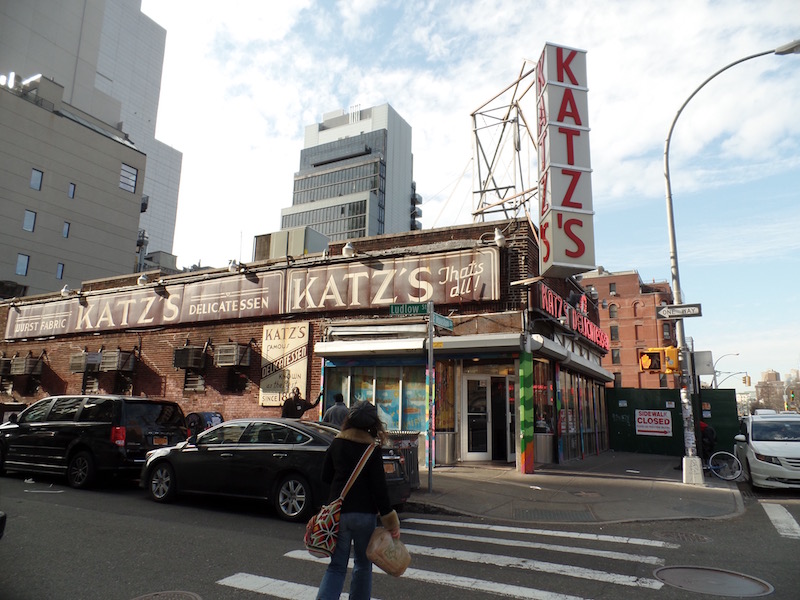
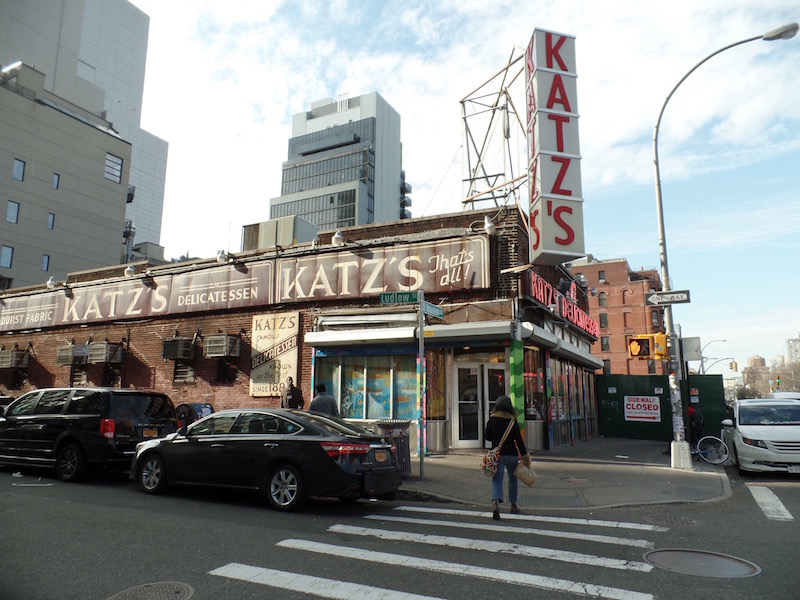
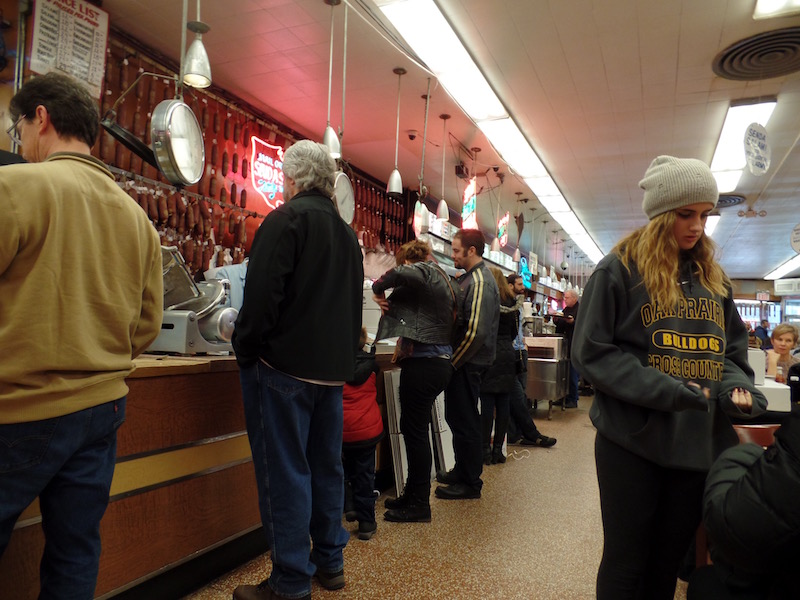
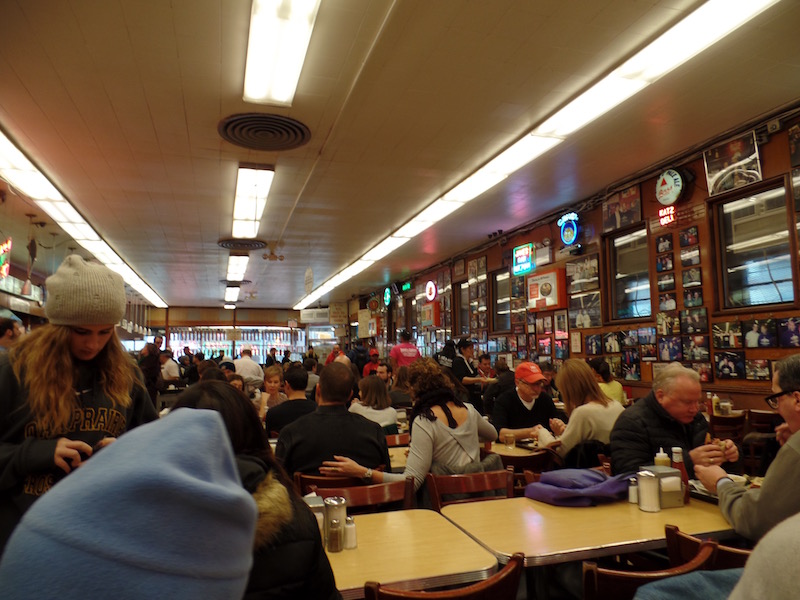
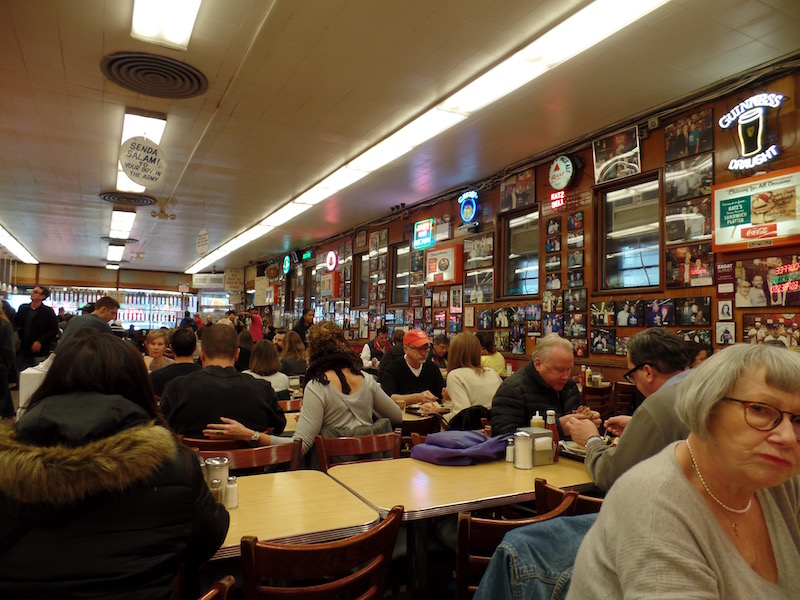
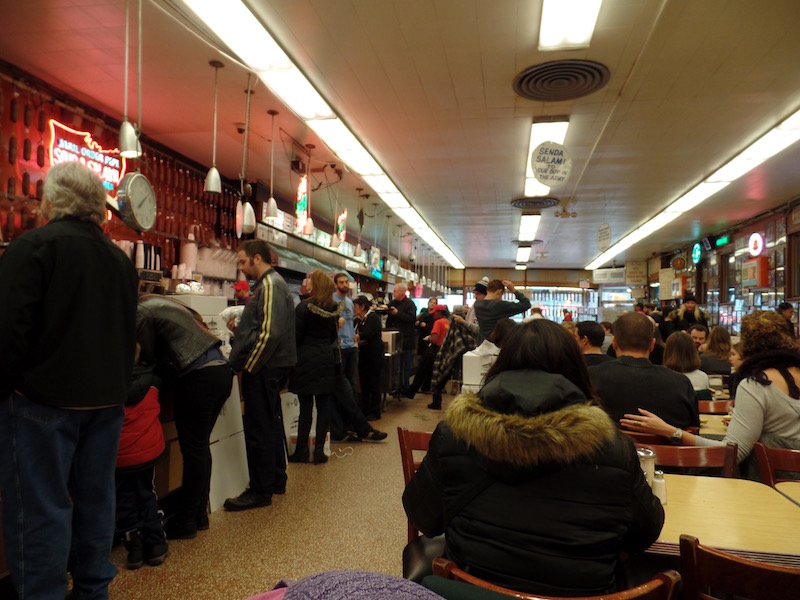
Now ... the ordering and getting of food is a bit .. interesting. As you enter, a door attendant hands you a numbered ticket. Then you can go to one of a variety of stations called "cutters" to order. As you get your food, the employee computes a running total of the pre-tax bill. Then you pay as you leave. If you can't provide a ticket, there is a $50 "lost ticket fee".
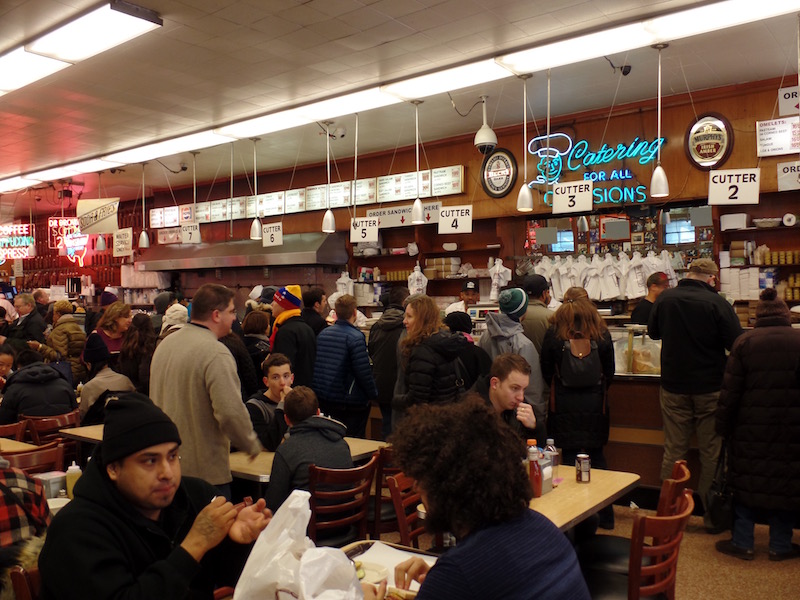
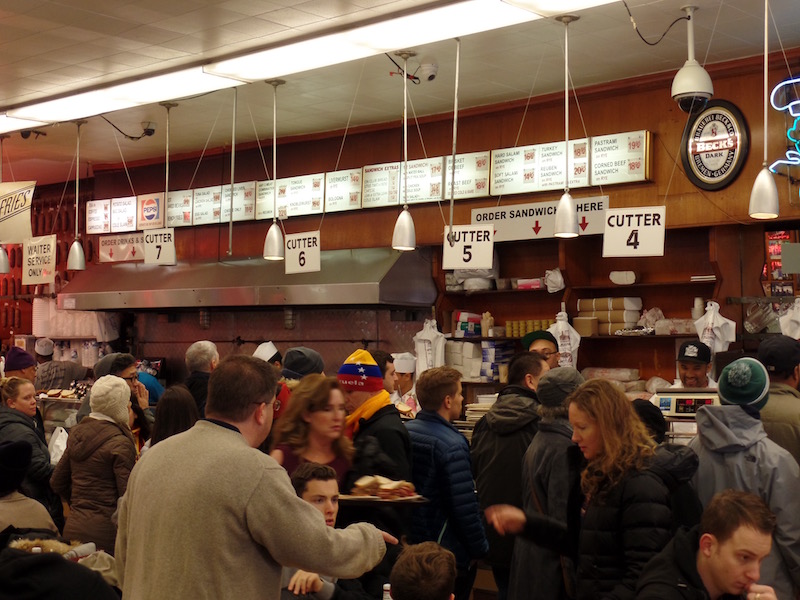
Tom had a Pastrami on rye and I went with the sausage and baked beans. Both came with an entire plate of pickles!
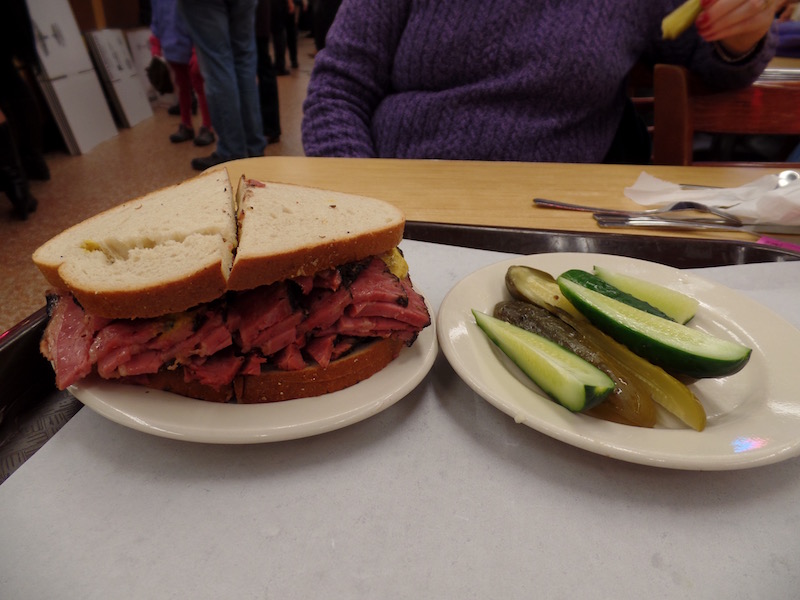
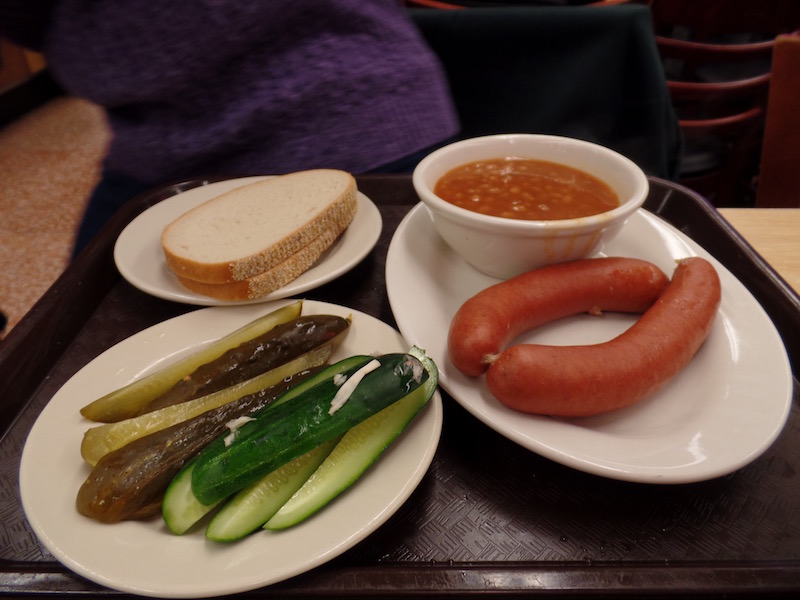
Another Big Onion tour this afternoon, this time the Brooklyn Bridge. We started by the Tweed Courthouse which was built in Italianate style with Romanesque Revival interiors, using funds provided by the corrupt William M. "Boss" Tweed, whose Tammany Hall political machine controlled the city and state governments at the time. The outer shell was built from 1861 to 1872 but the construction was halted when the public became aware of all of the kickbacks and corruption. It was finally finished in 1881.
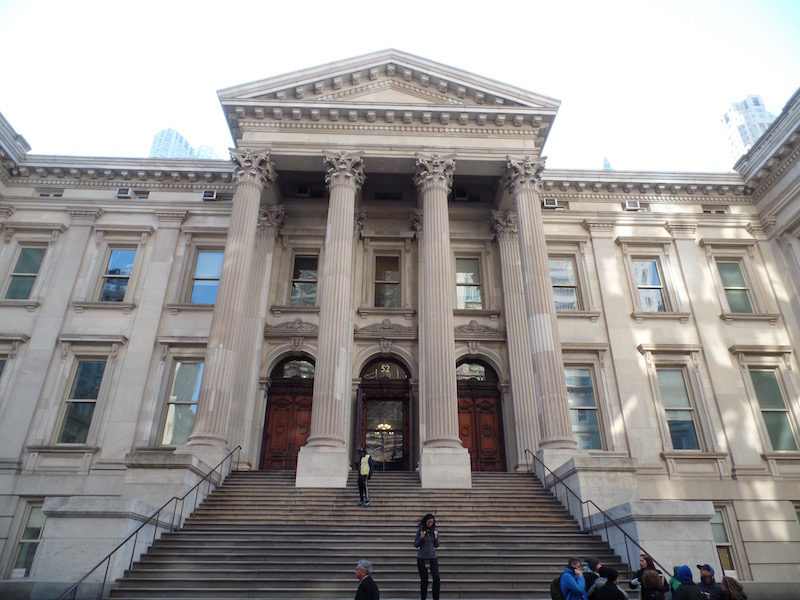
This is the Surrogate's Courthouse. Planned since 1888 for use as a Hall of Records and home to Surrogate's Court, it took 8 years to build, from 1899 to 1907, and cost over $7 million. It was designed by John R. Thomas, who adapted his prize-winning design for a new City Hall which was never built. When he died, the Tammany Hall architects Horgan & Slattery took over. The building replaced the old Hall of Records in City Hall Park. Flanking the main entrance are two sets of sculptures. The first (on the left) is New York in it's Infancy by Philip Martiny. The central figure represents New York, wearing a crown to indicate royal rule and carrying books and a paper. To the left and right are an Indian and a Dutch settler. On the other side of the entrance is New York in Revolutionary Times, also by Philip Martiny. Here New York wears a helmet, carrying a torch in her left hand and resting her right hand on a globe. To the left is a British soldier with a shield bearing the motto of Great Britain. To the right is an 18th century woman holding flowers and standing before a shield with the Stars and Stripes. Around the top are sculptures of mostly eminent figures from the city's past.

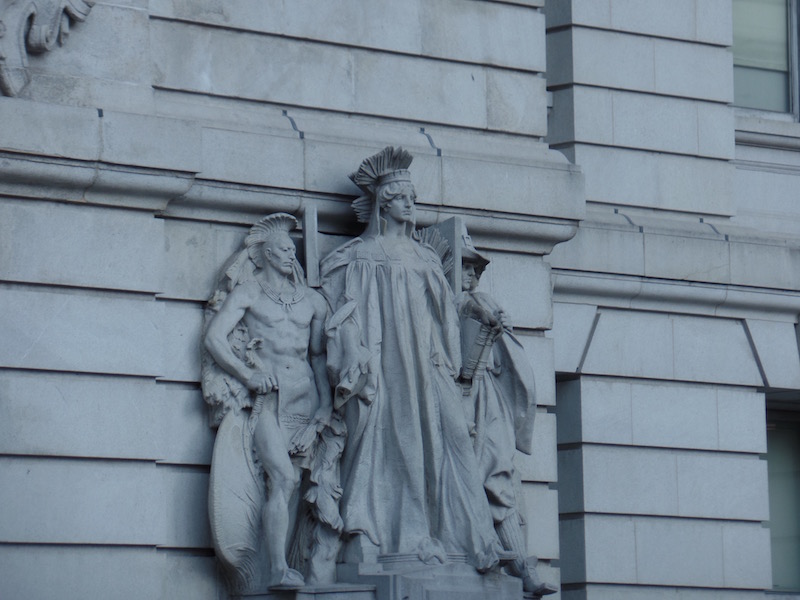
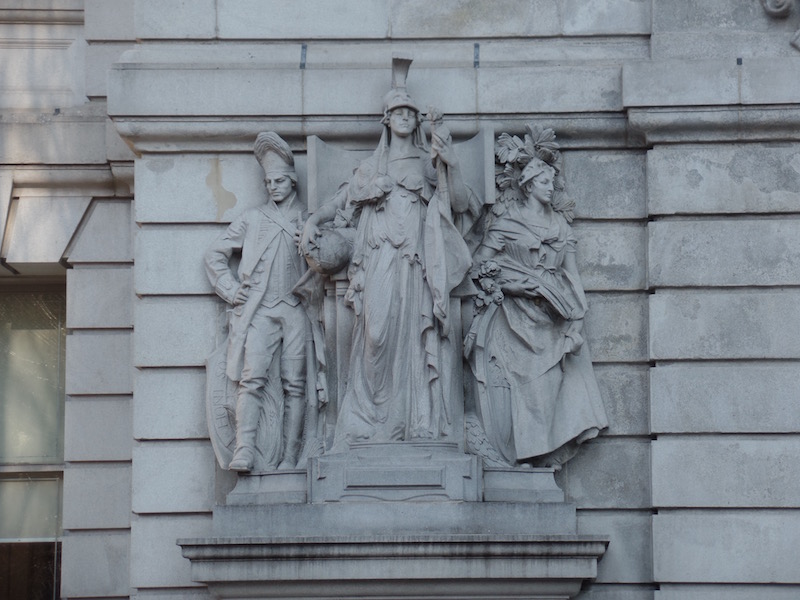
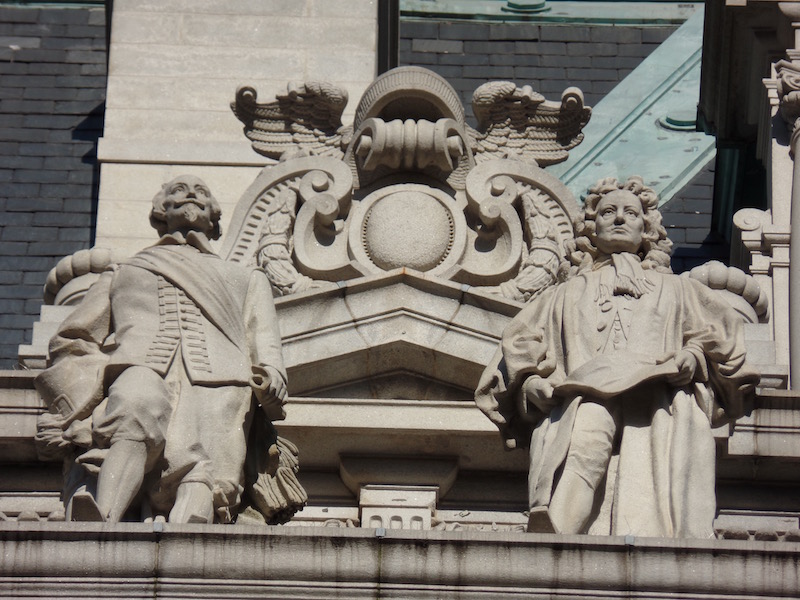
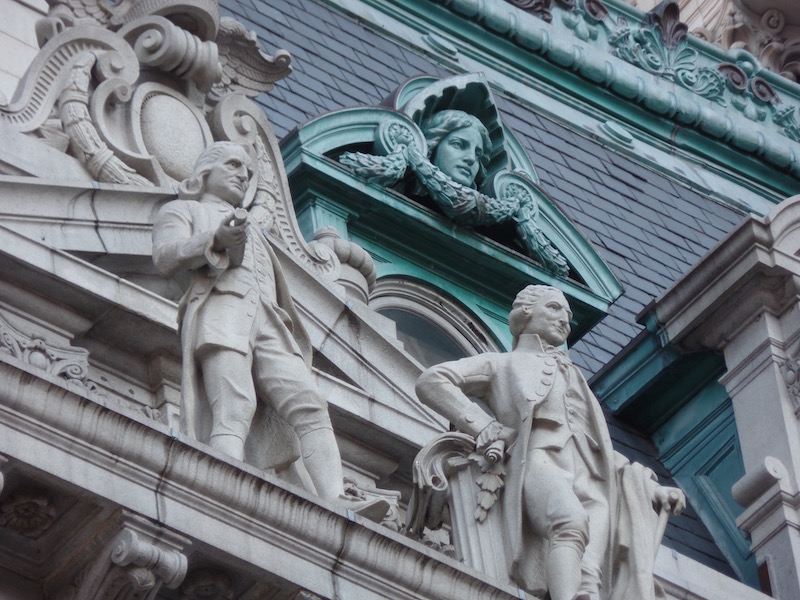
Then the Manhattan Municipal Building, which was built between 1907 and 1914. This huge building was built to handle the increased space needs after the 5 boroughs were consolidated into the city in 1898. At the top is the statue Civic Fame, installed in March 1913. The statue is a gilded copper figure, made from about 500 pieces of hammered copper and was designed by Adolph Weinman. She carries various symbolic items: a shield bearing the New York City coat of arms, a branch of leaves, and a mural crown, which she holds aloft. The mural crown has five crenellations or turrets, which evoke city walls and represent the five boroughs. The crown also includes dolphins as a symbol of "New York's maritime setting".
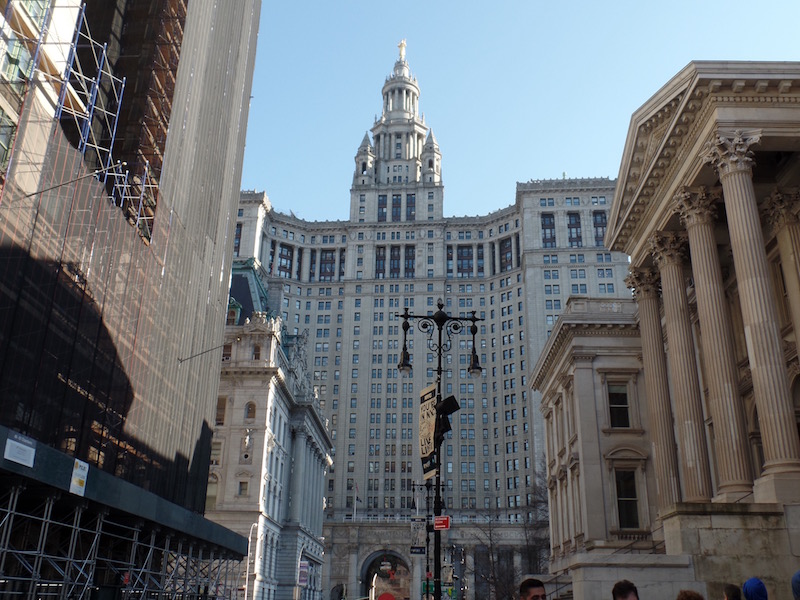
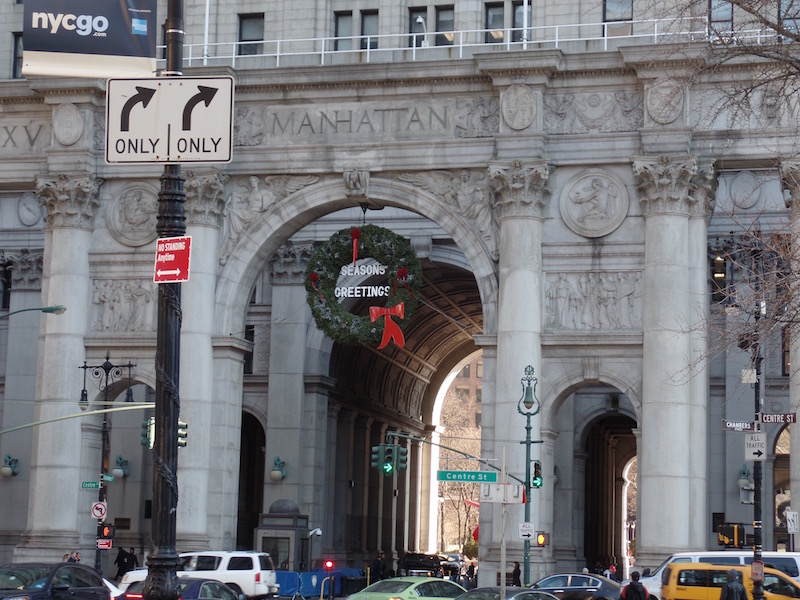
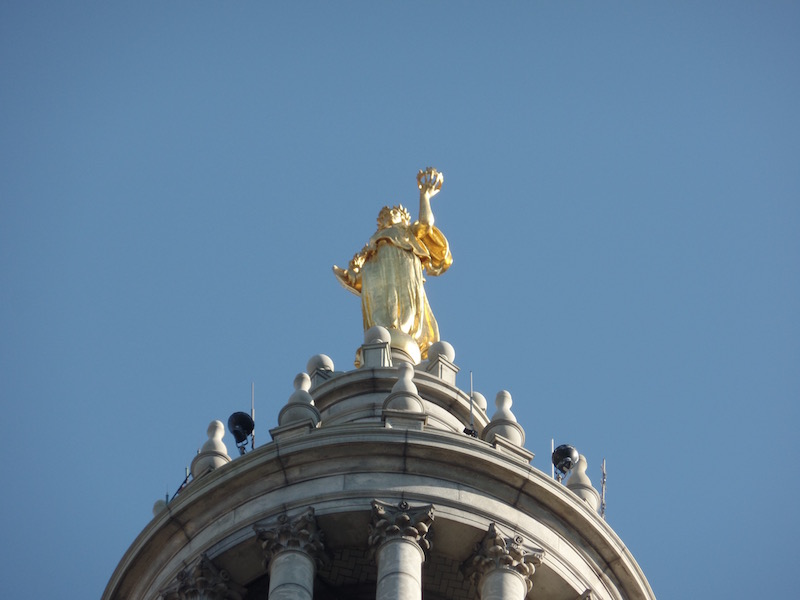
This is only a side view (so not all that interesting) of the New York City Hall. The building is the oldest city hall in the United States that still houses its original governmental functions. The cornerstone was laid in 1803 but construction was delayed after the City Council objected that the design was too extravagant. In response, McComb and Mangin reduced the size of the building and used brownstone at the rear of the building to lower costs; the brownstone, along with the original deteriorated Massachusetts marble facade, quarried from Alford, Massachusetts, was replaced with Alabama limestone in 1954 to 1956. Labor disputes and an outbreak of yellow fever further slowed construction. The building was not dedicated until 1811, and opened officially in 1812.
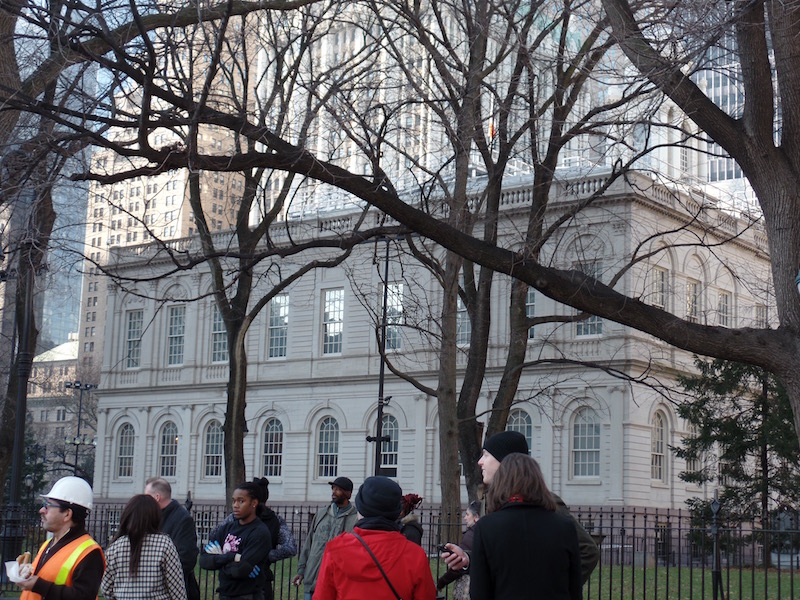
This is a residential tower at 8 Spruce Street, designed by Frank Gehry. The architecture is quite unique as the walls are not "flat". The guide for our tour said that people hated it, although it seems that most people in Manhattan actually like it .. it is the people in Brooklyn who do not like it because it blocks the view of the Woolworth Building.
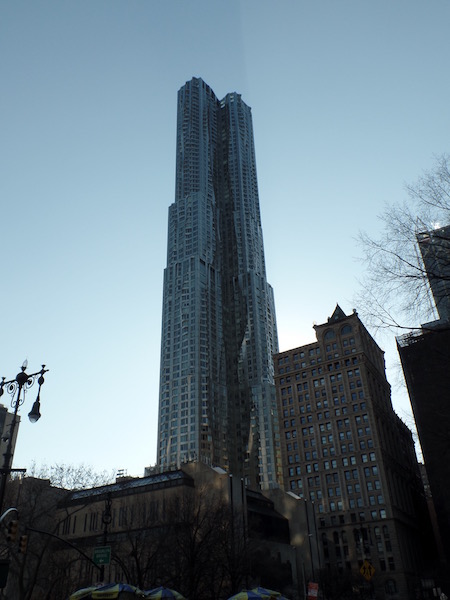
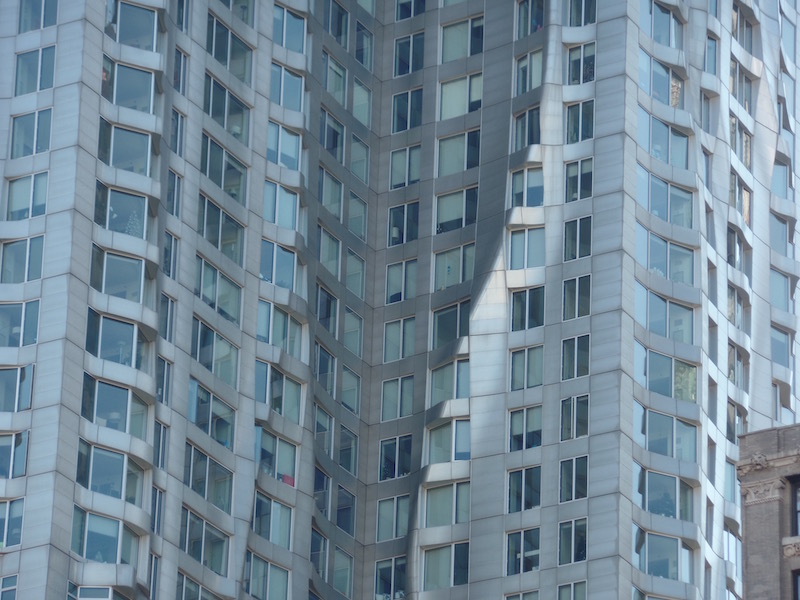
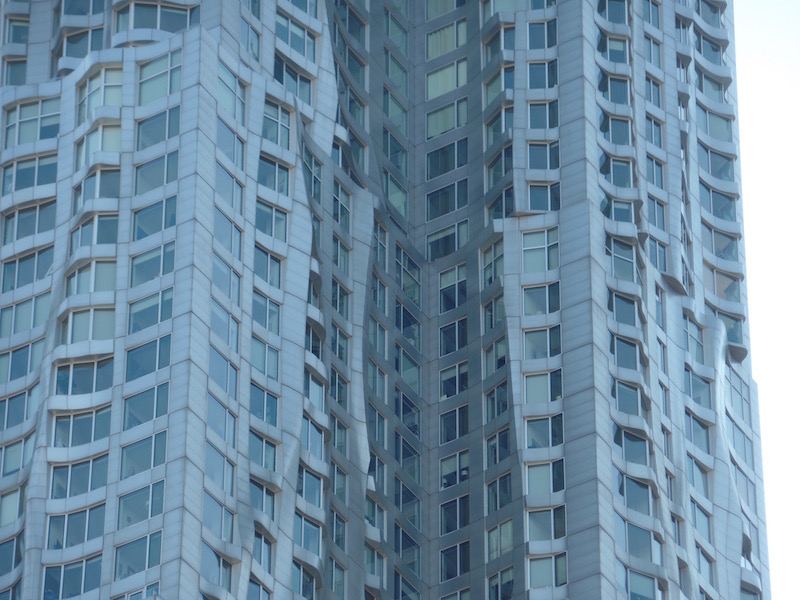
The next whole set of pictures are of the Brooklyn bridge at various stages as we walked all the way across, from lower Manhattan to Brooklyn. It is a hybrid cable-stayed/suspension bridge in New York City and is one of the oldest bridges of either type in the United States, completed in 1883. It has an interesting history, which I'll put into blurbs as we go through the pictures. Construction began in 1869, designed by John Augustus Roebling. However, in a somewhat freak accident while conducting surveys for the project (crushed his foot, which required toes to be amputated .. he developed tetanus and died). That left his son, Washington Roebling in charge.
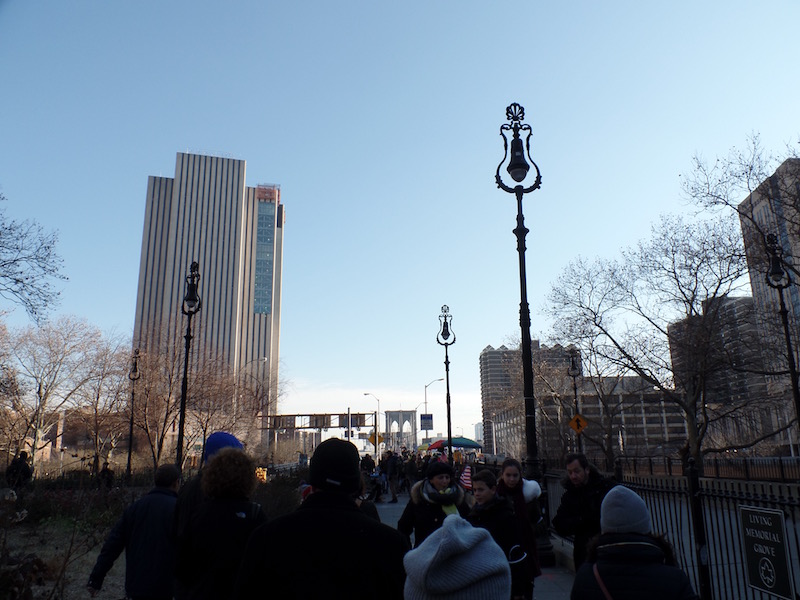
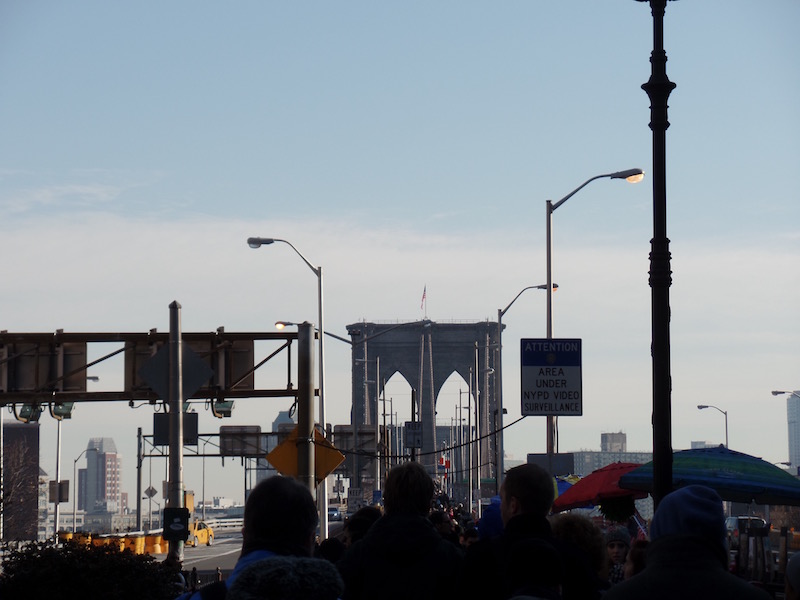
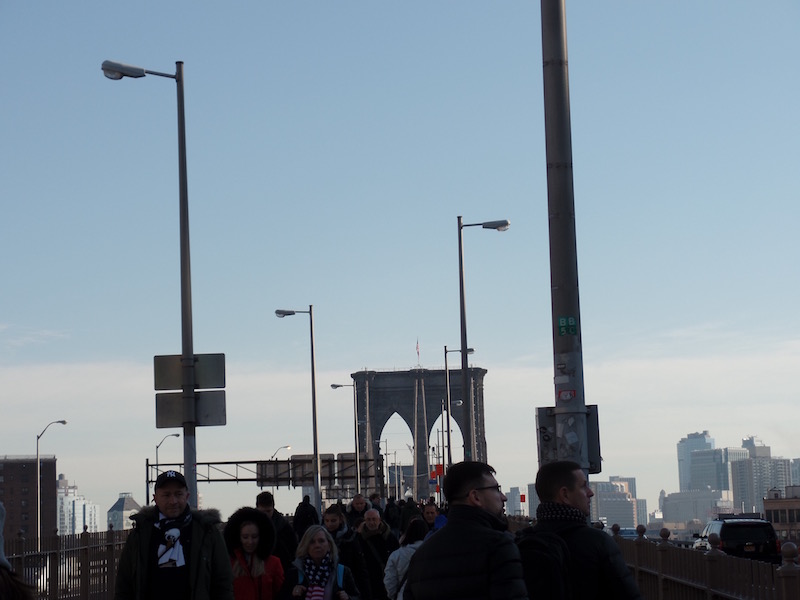
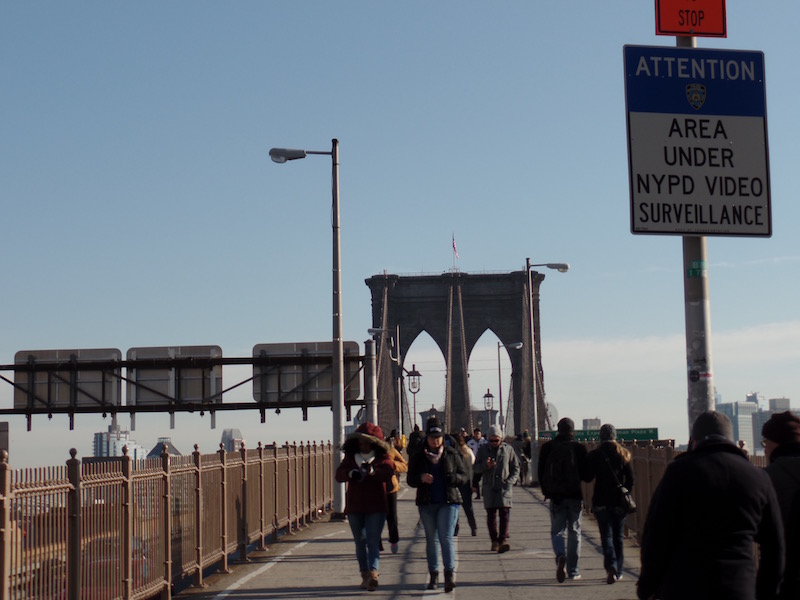
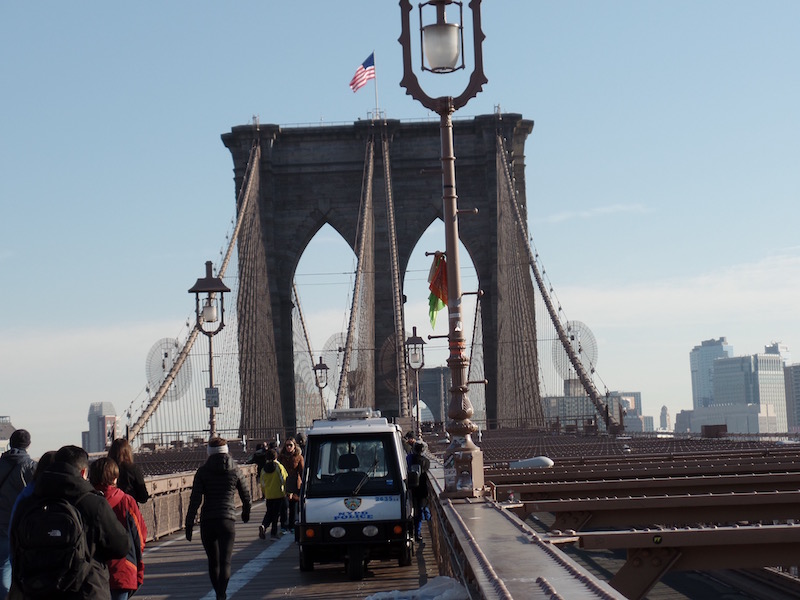
Viewing back to Lower Manhattan, you can see the Gehring building (left) and the Manhattan Municipal building (right).
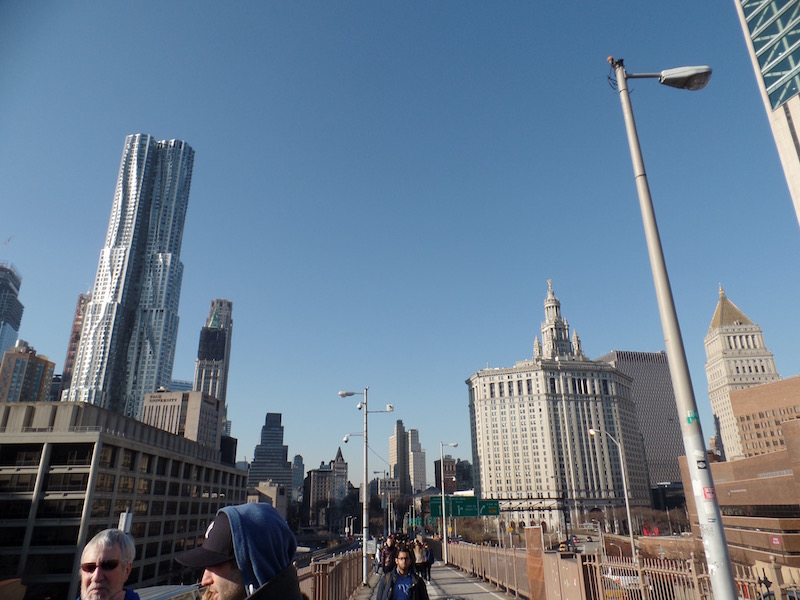
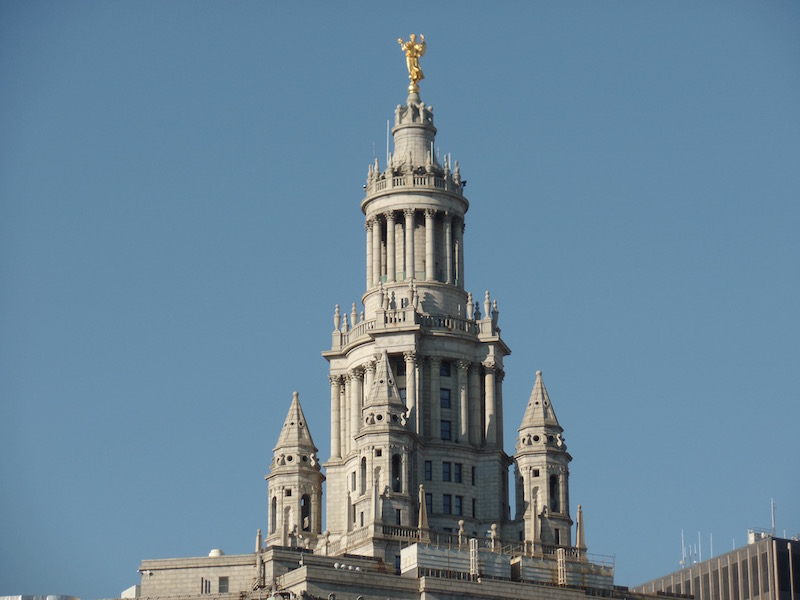
It was designed to have pedestrians, hence this nice wooden surface.
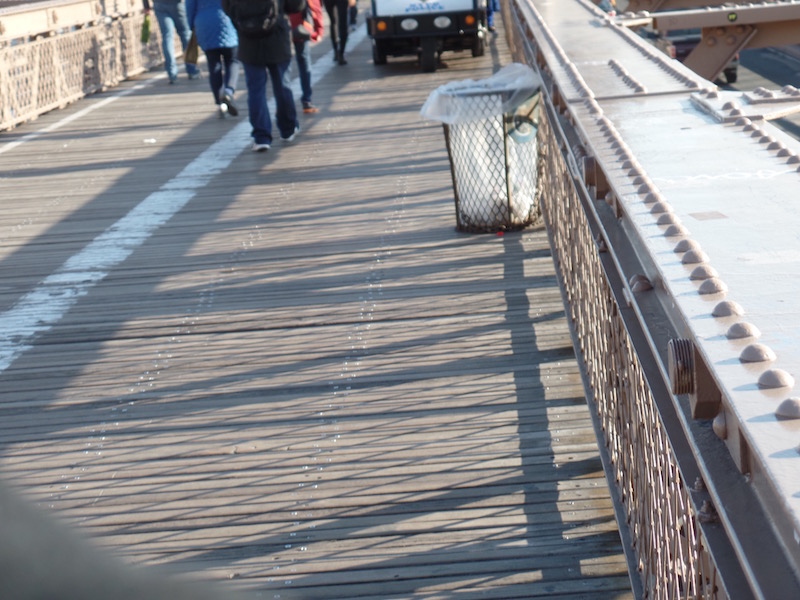
The bridge's two towers were built by floating two caissons, giant upside-down boxes made of southern yellow pine, in the span of the East River, and then beginning to build the stone towers on top of them until they sank to the bottom of the river. Compressed air was pumped into the caissons, and workers entered the space to dig the sediment, until the caissons sank to the bedrock. The whole weight of the bridge still sits upon a 15-foot thickness of southern yellow pine wood under the sediment. Many workers became sick with the bends in this work, including Washington Roebling, who went down into the caissons as well. Roebling's debilitating condition left him unable to physically supervise the construction firsthand, and so his wife, Emily Warren Roebling, took over. Now ... supposedly he did all the work and she just relayed the information, but you can't actually see the bridge from that apartment, so many people believe that Emily actually did all of the work.
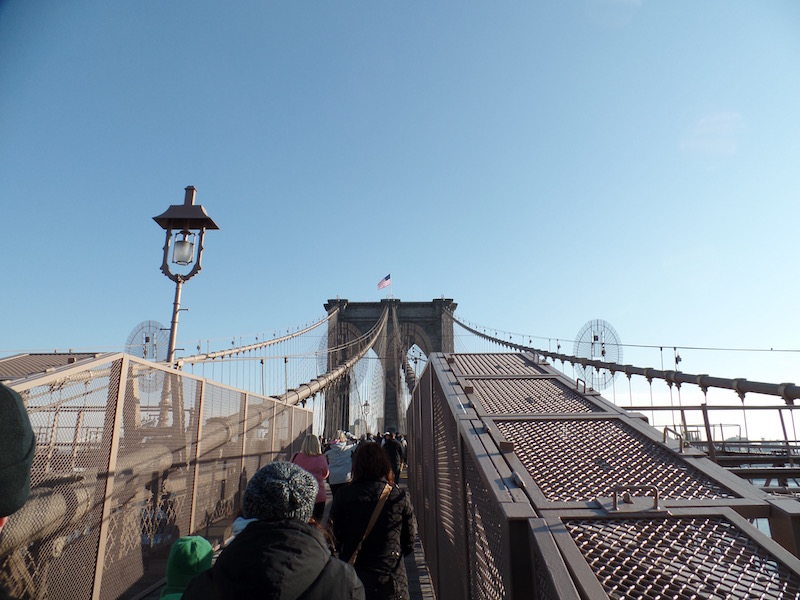
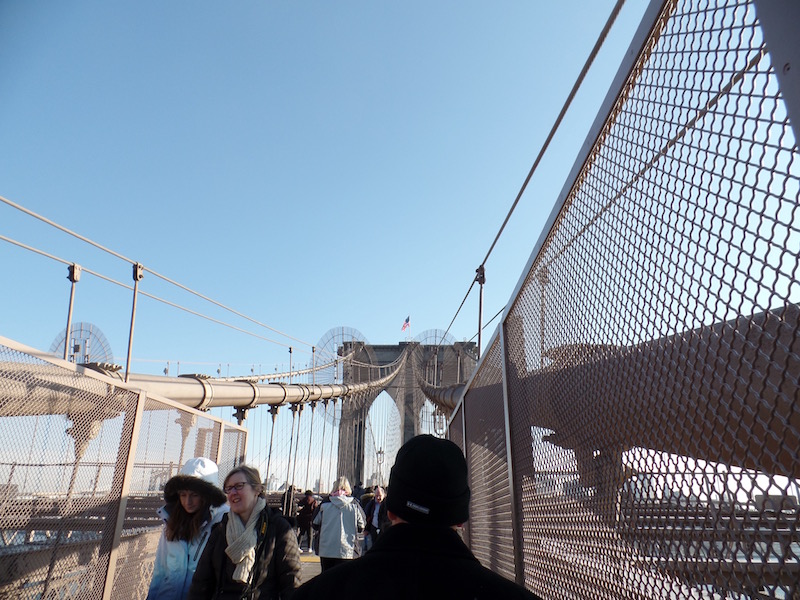
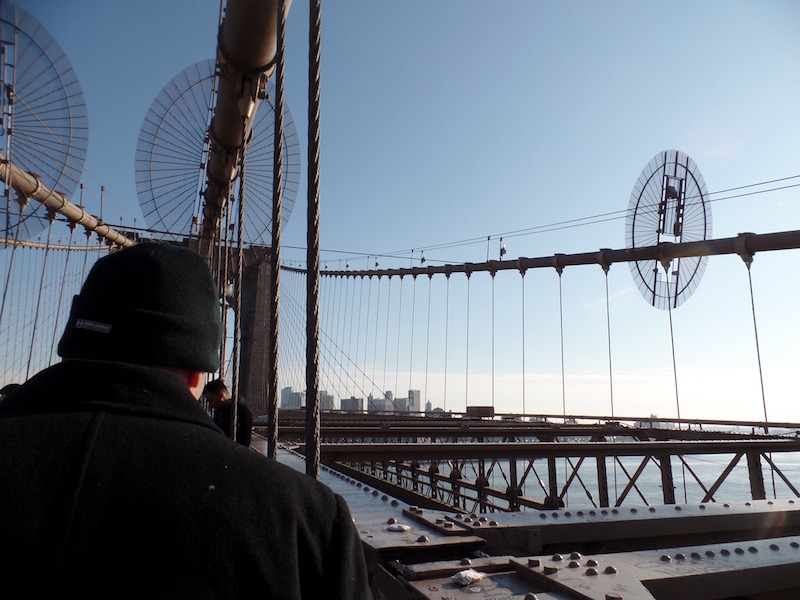
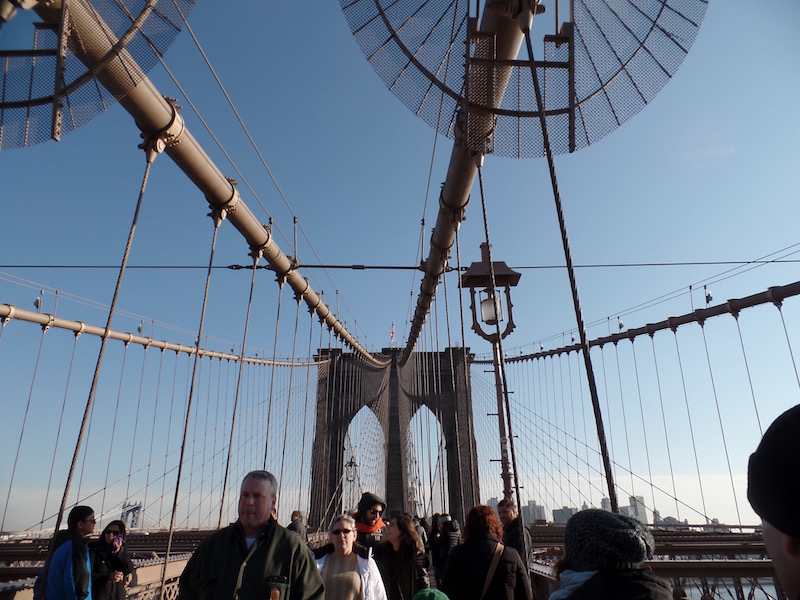
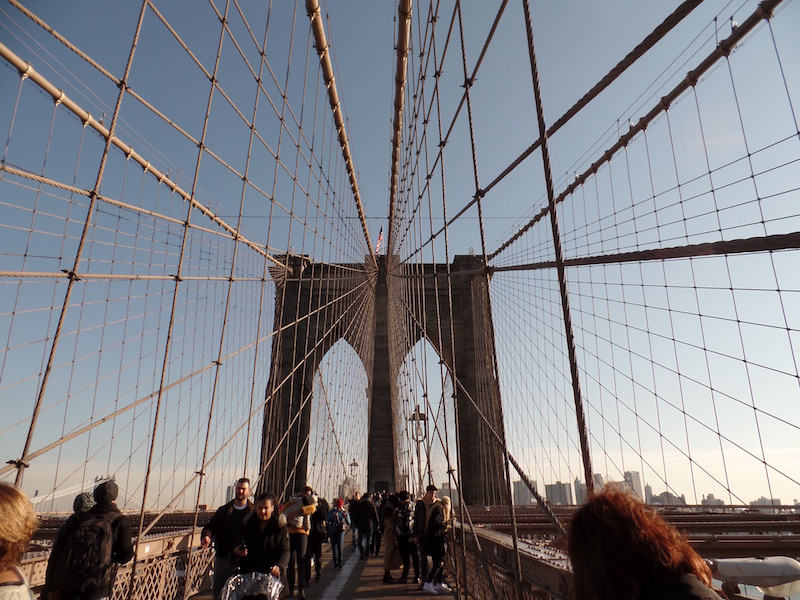
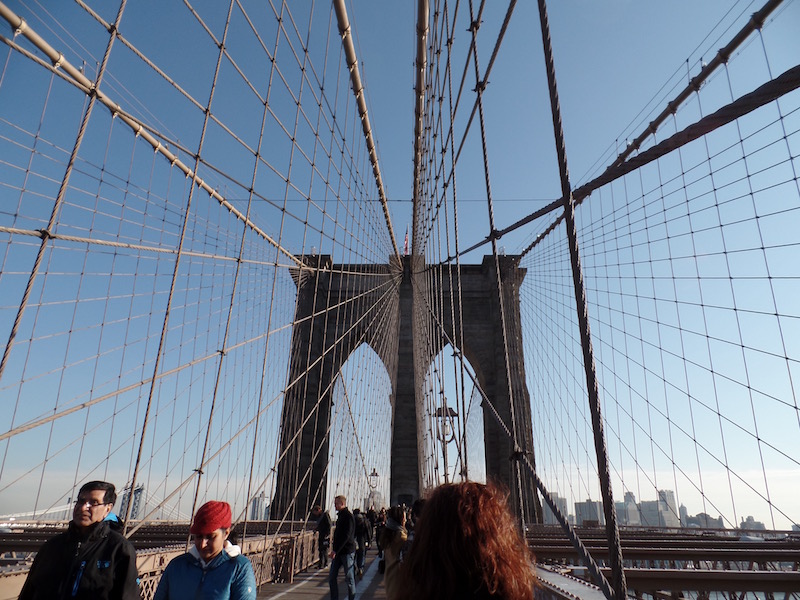
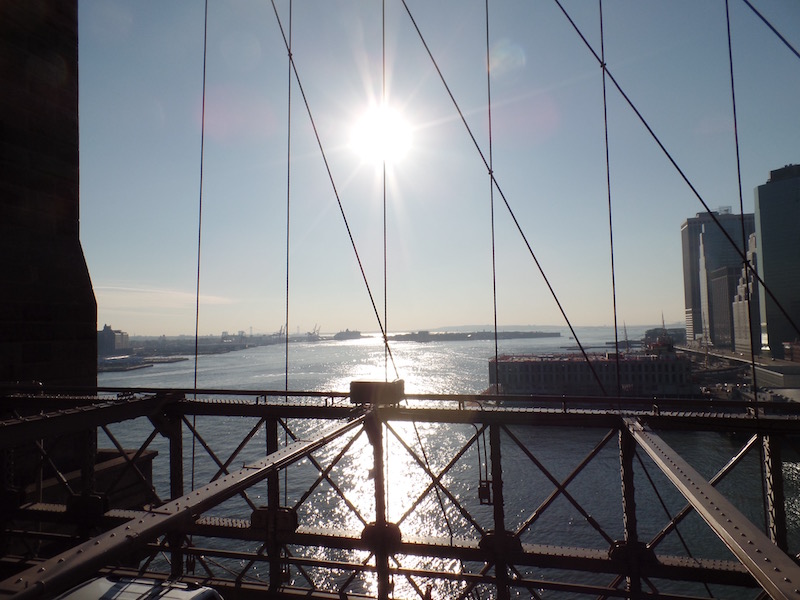
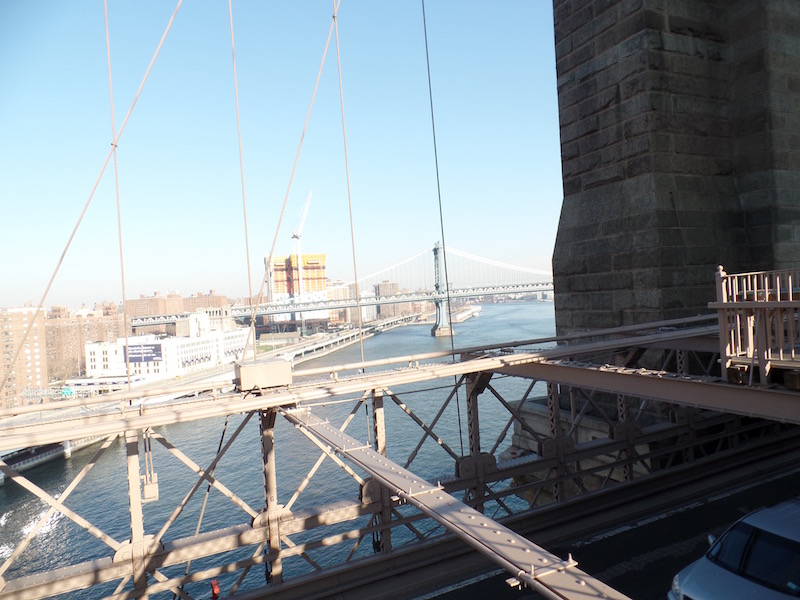
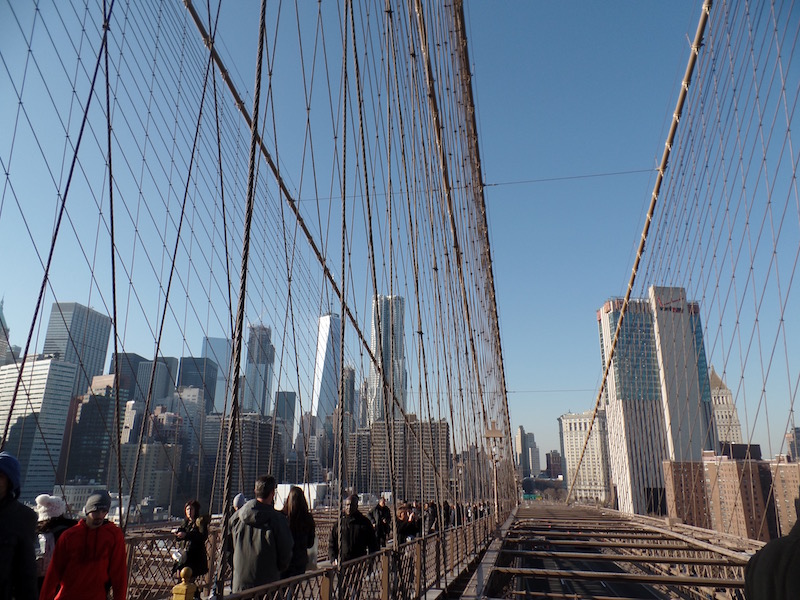
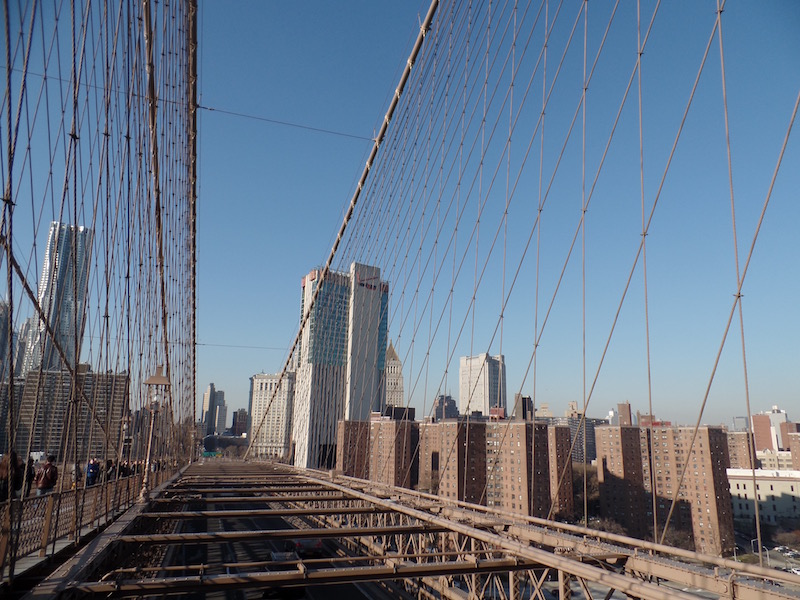
To build the bridge, wire was looped around a carrier wheel and pulled across the river from Brooklyn to New York. The steam-engine-driven system worked like a conveyor belt. Over 14,000 miles of wire were used in the cables. When 278 wires were ready, they were bound to form a strand. Nineteen strands form one cable. These strands are then bolted in place.
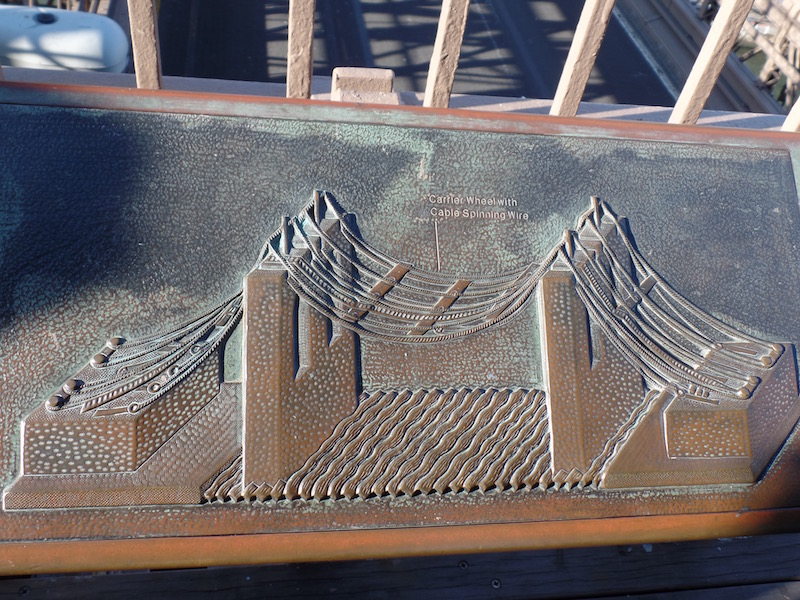
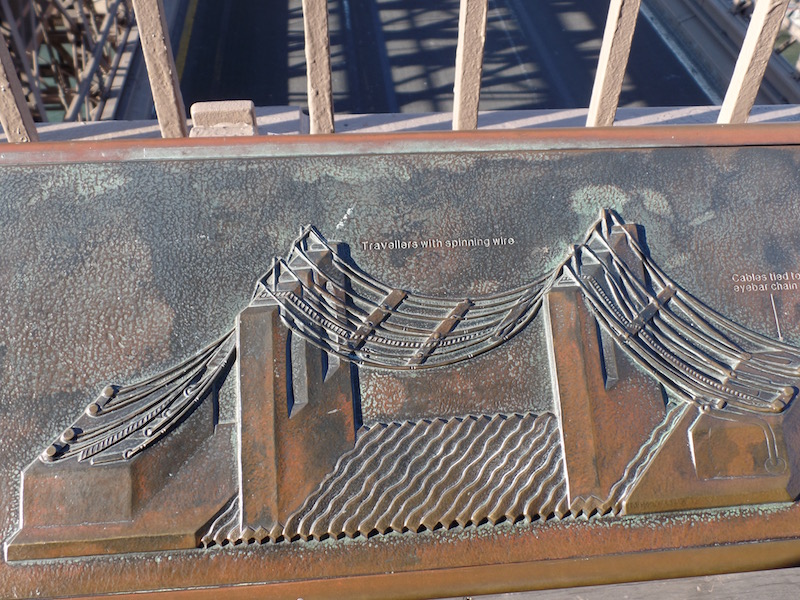
The bridge opened for use on May 24, 1883. On that first day, a total of 1,800 vehicles and 150,300 people crossed what was then the only land passage between Manhattan and Brooklyn. Emily Warren Roebling was the first to cross the bridge. On May 30, 1883, six days after the opening, a rumor that the bridge was going to collapse caused a stampede, which was responsible for at least twelve people being crushed and killed. On May 17, 1884, P. T. Barnum helped to squelch doubts about the bridge's stability, while publicizing his famous circus, when one of his most famous attractions, Jumbo, led a parade of 21 elephants over the Brooklyn Bridge.
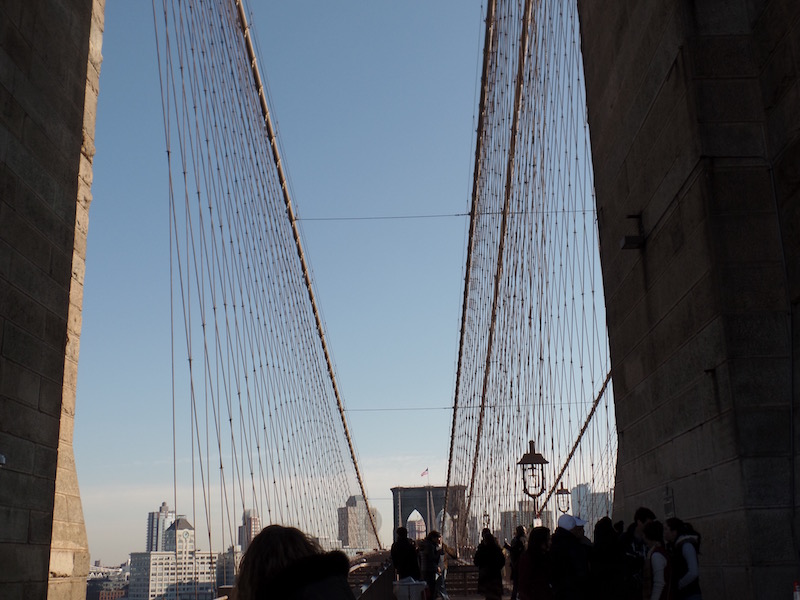
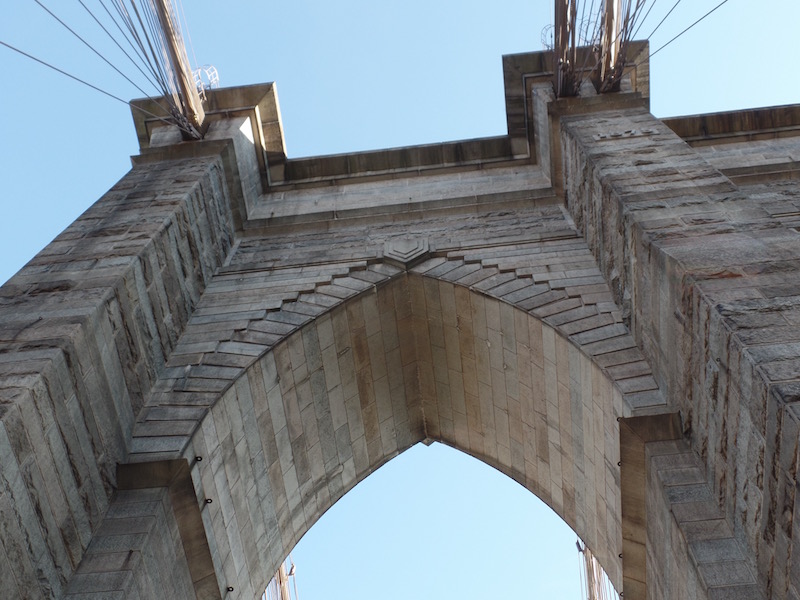
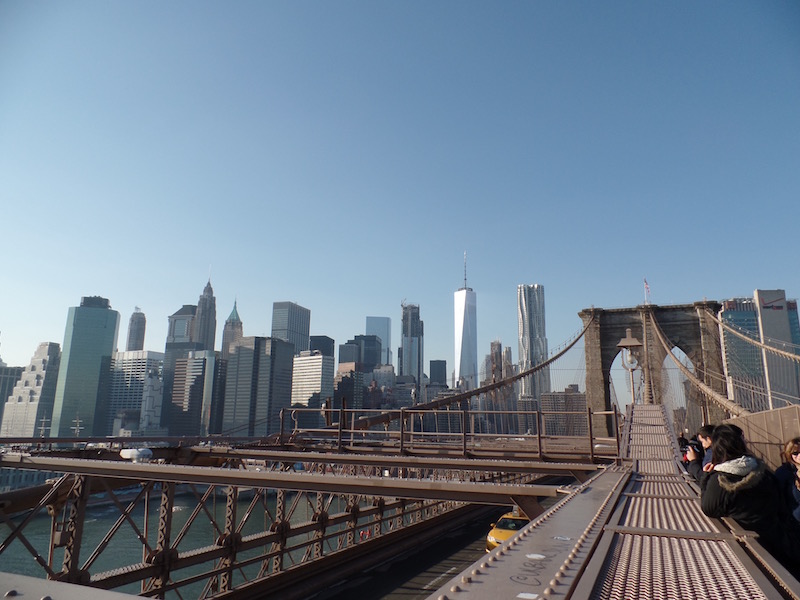
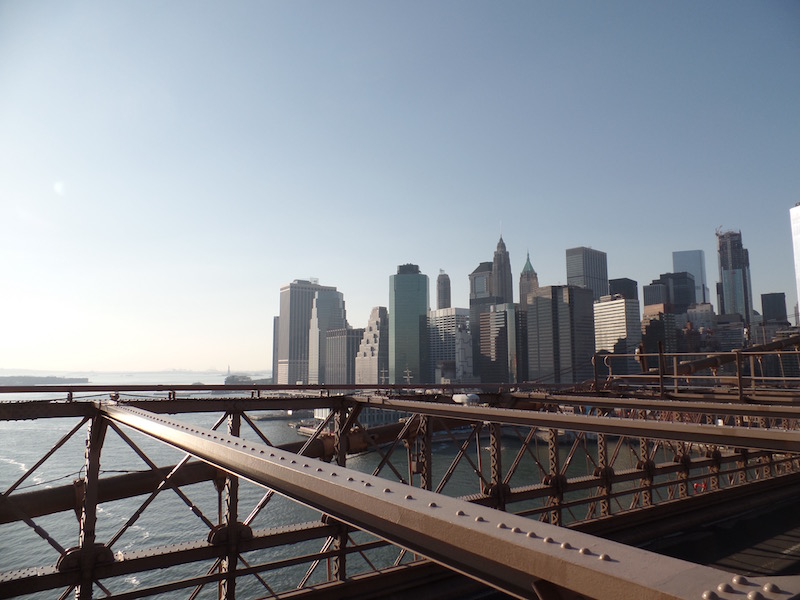
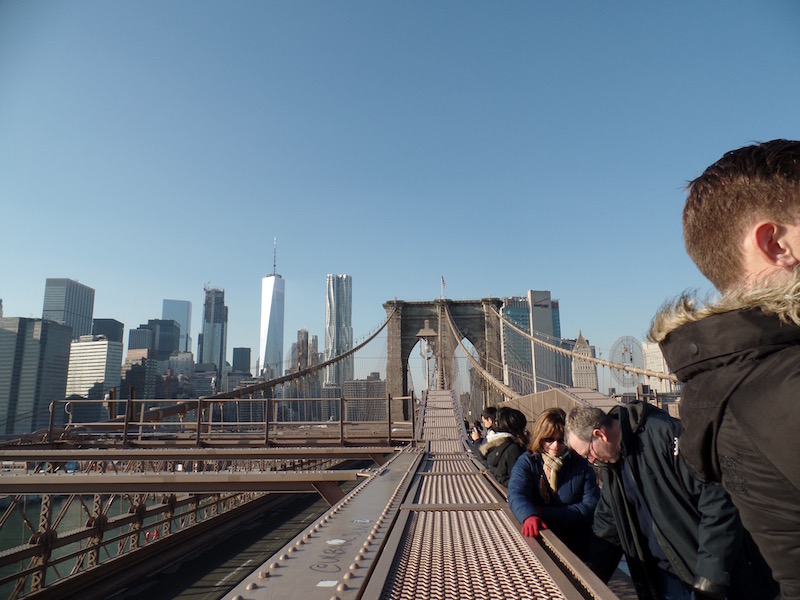
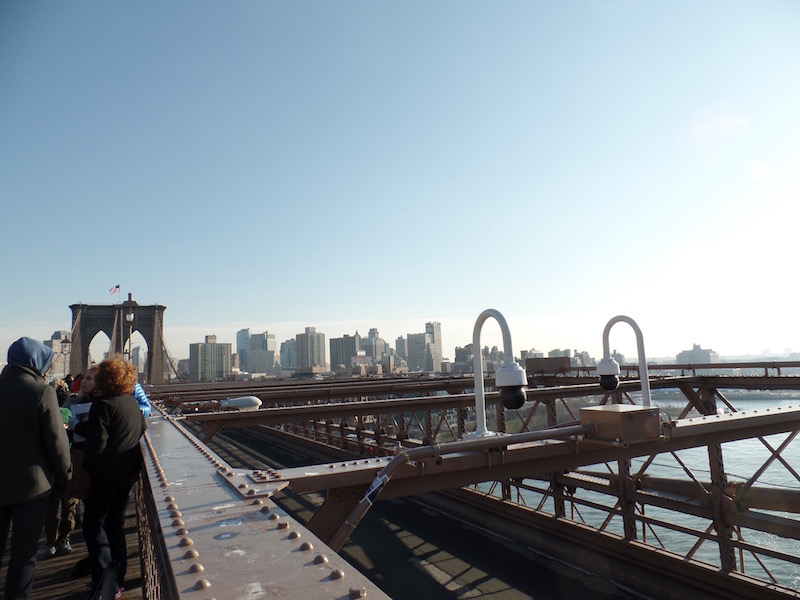
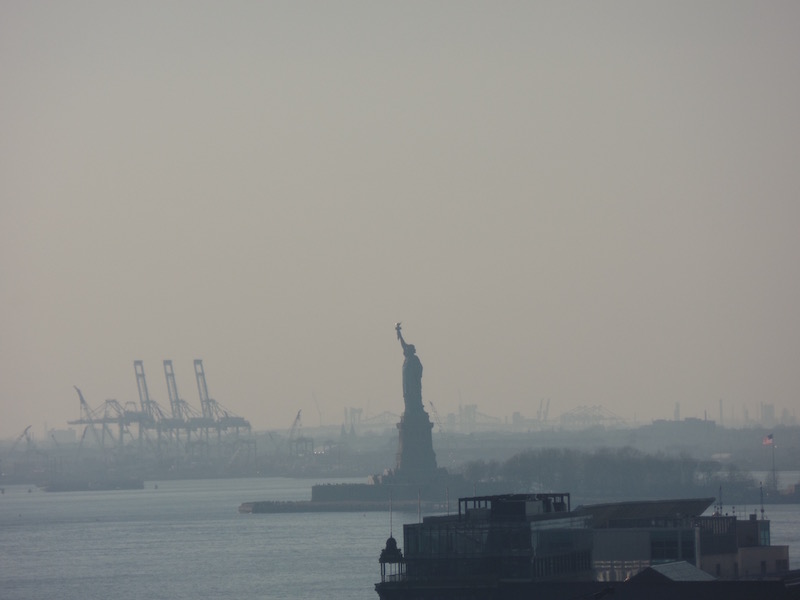
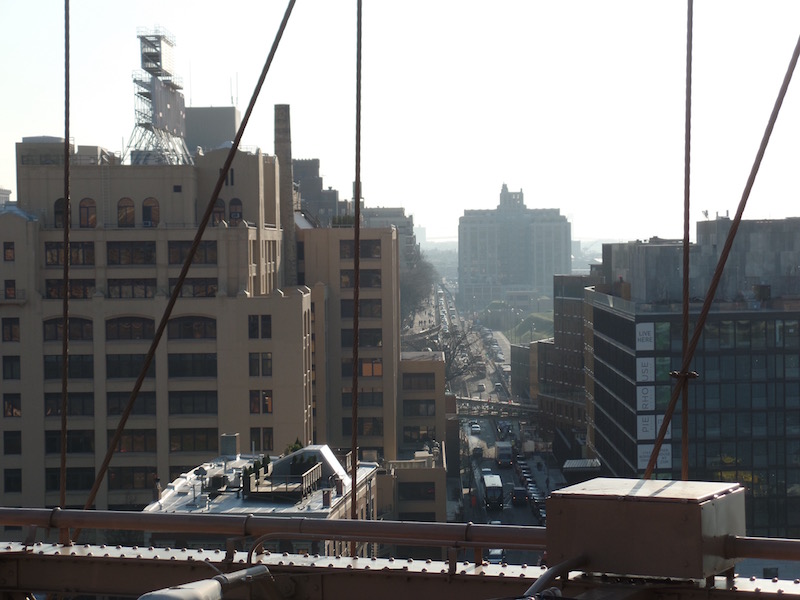
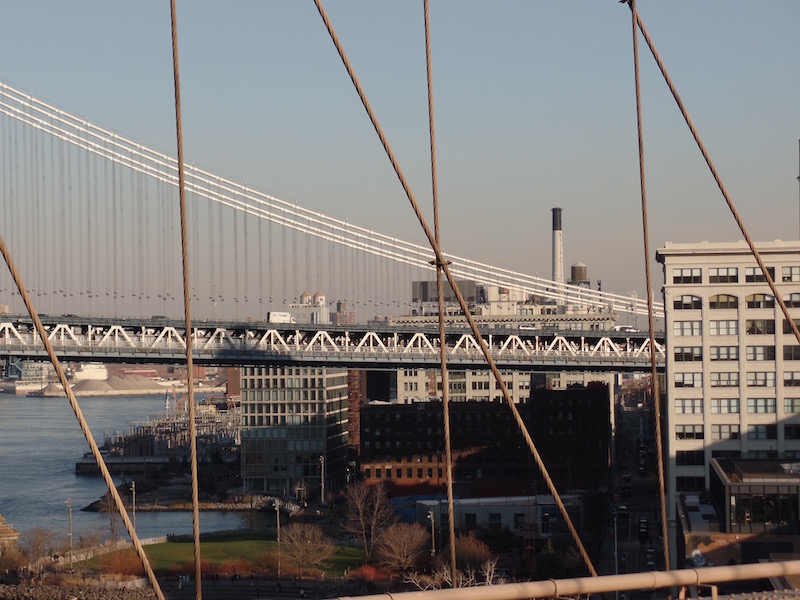
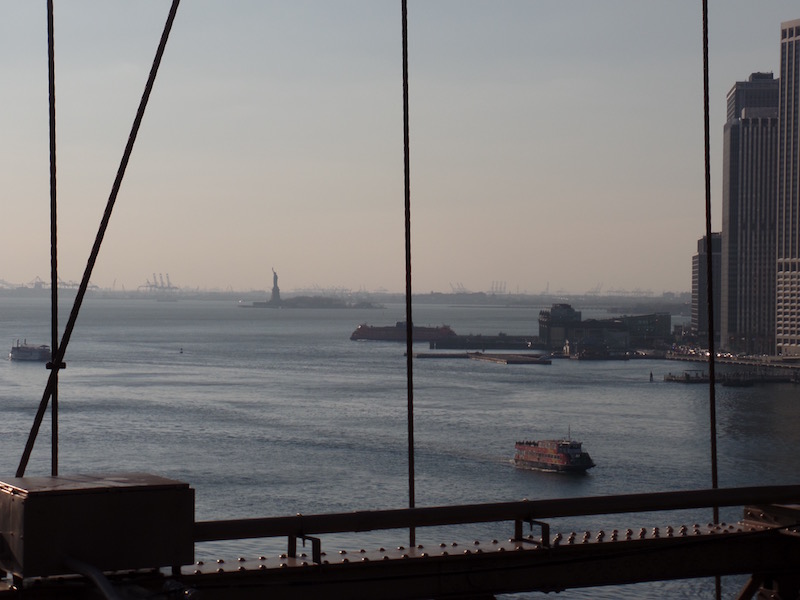
"Love locks" is a practice by which a couple inscribes a date and their initials onto a lock, attach it to the bridge, and throw the key into the water as a sign of their "everlasting love". Although the origin of the practice is unknown, it is more popular in Europe, including one of the bridges in Paris. It has reportedly caused damage to certain bridges and is officially illegal in New York City. The love locks are occasionally removed from the Brooklyn Bridge
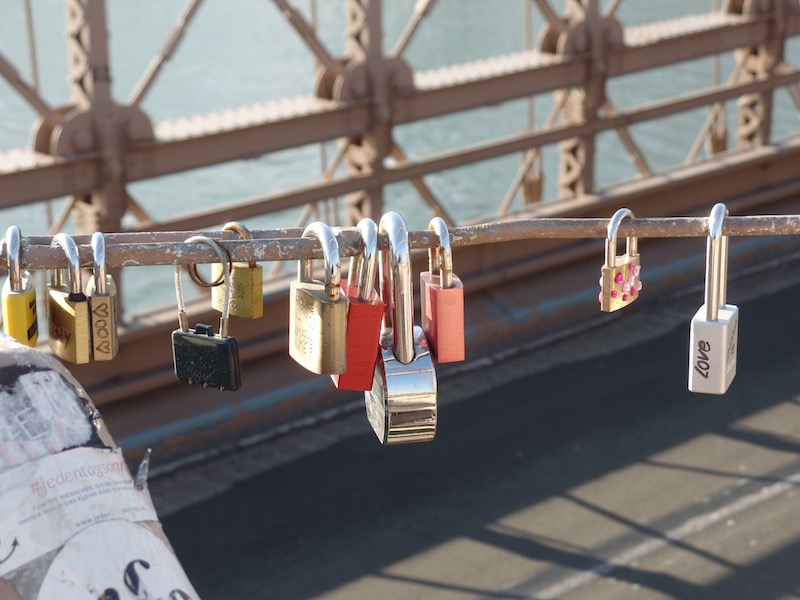
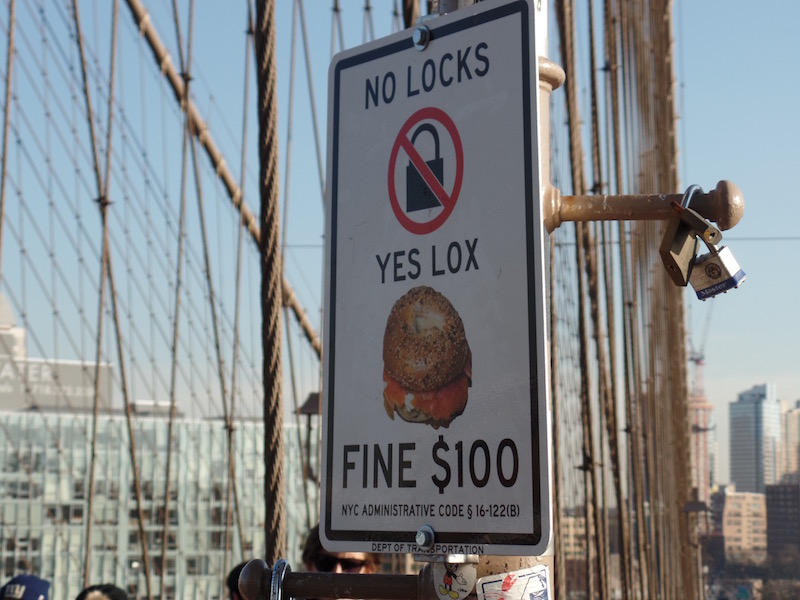
DUMBO is a term I hadn't heard before, which stands for Down Under the Manhattan Bridge Overpass. The area has emerged as one of New York City's premier arts districts, and has NYC's highest concentration of technology firms (it is home to 25% of the city's tech firms).
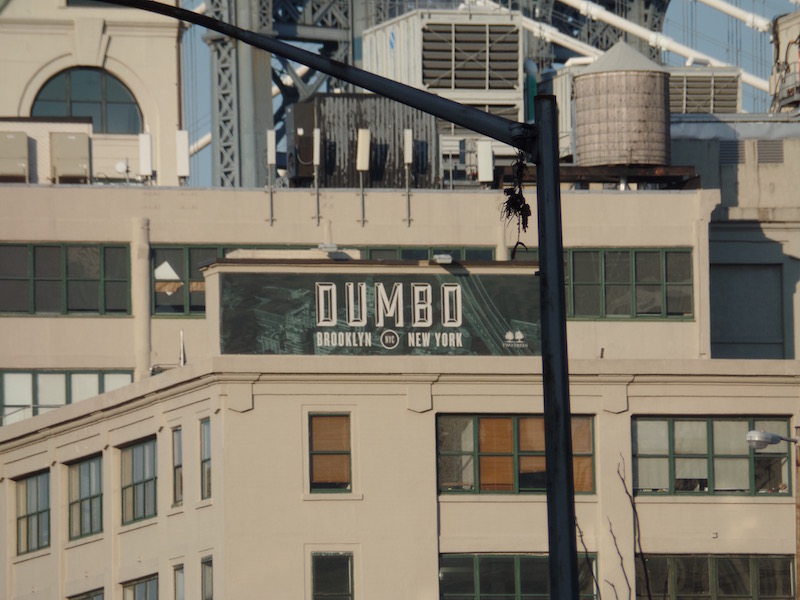
This massive factory building was constructed by Mason, Au and Mangenheimer Candy in 1885. In actuality, the painted signs on the building are a bit misleading since there was no such candy as "Peaks Mason Mints"; there were Mason Peaks and Mason Mints. Mason Peaks was a coconut-chocolate combination (like Mounds) while Mason Mints was a chocolate-covered mint patty (like today's Peppermint Patty). Mason also made Dots, a fruit or cinnamon-flavored gumdrop, and Crows, a licorice-flavored gumdrop. Both are still distributed by Tootsie Roll, which acquired Mason in 1972.
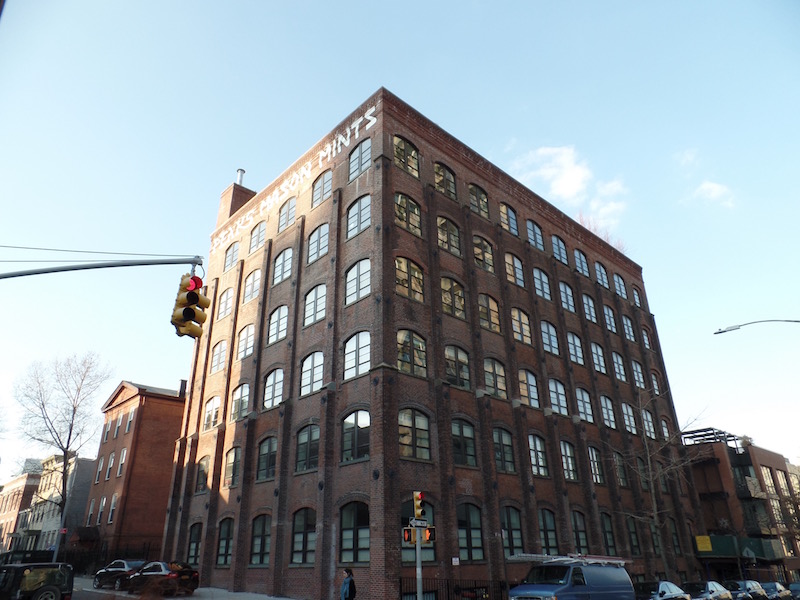
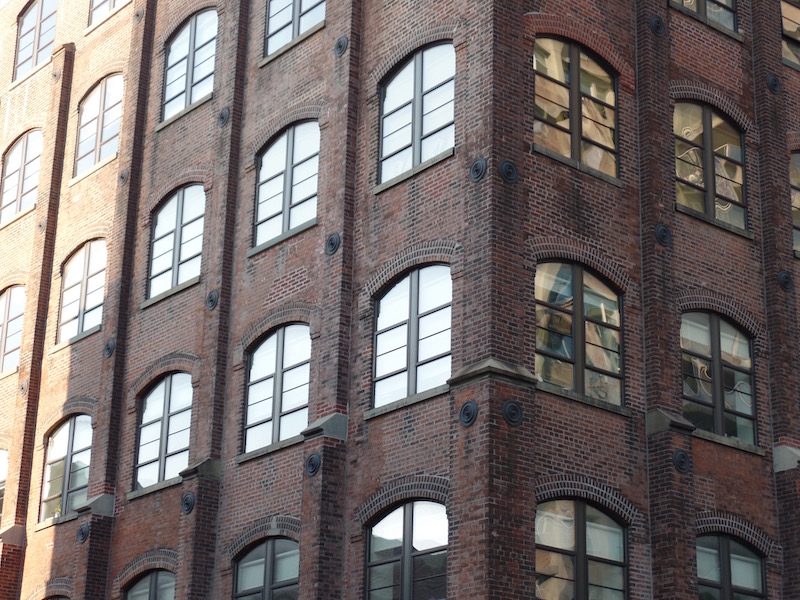
This home dates from 1829 (according to the little plaque) and is one of the oldest homes in Brooklyn Heights, at 69 Orange Street, in Federal style with a little bit of Victorian here and there. There is an urban legend about the origin of the "fruit" streets. Supposedly, the wealthy people who were living there were naming the streets after their themselves. This popular local legend says that Lady Middagh, whose family was also quite important, thought that naming streets after prominent residents was pretentious, so she changed the names to fruits in the middle of the night.
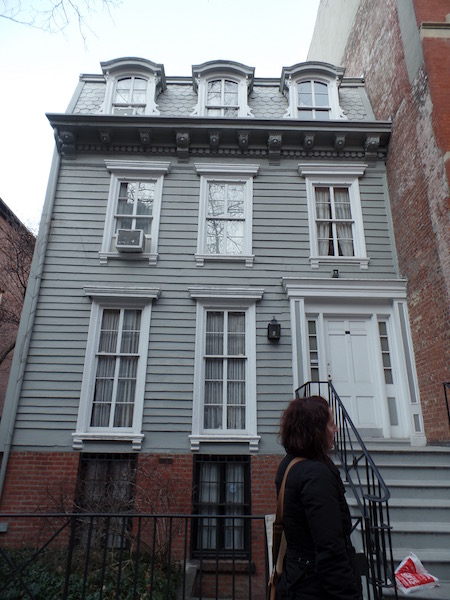
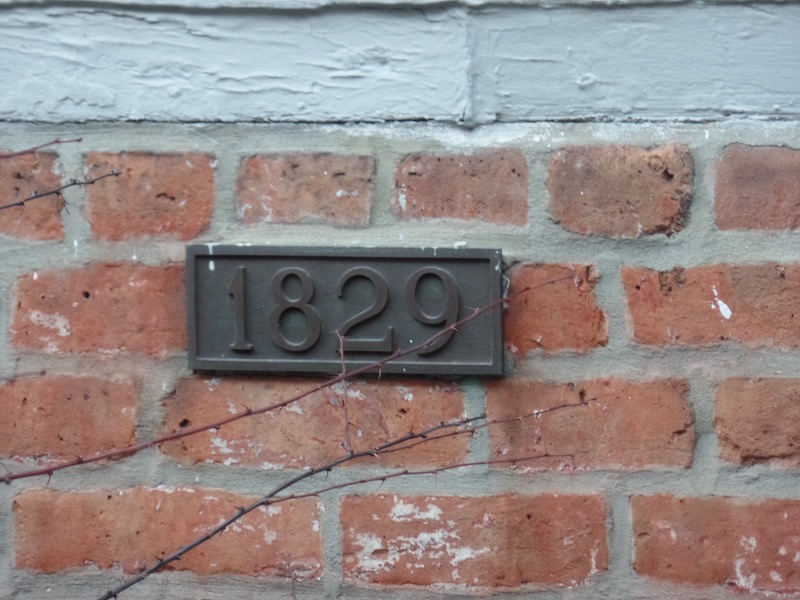
The Plymouth Bell is a cast iron bell which originally hung in the steeple of the Plymouth Church on Cranberry Street. The bell supposedly went silent after a fire in 1920 and then fell to the ground in 1947.
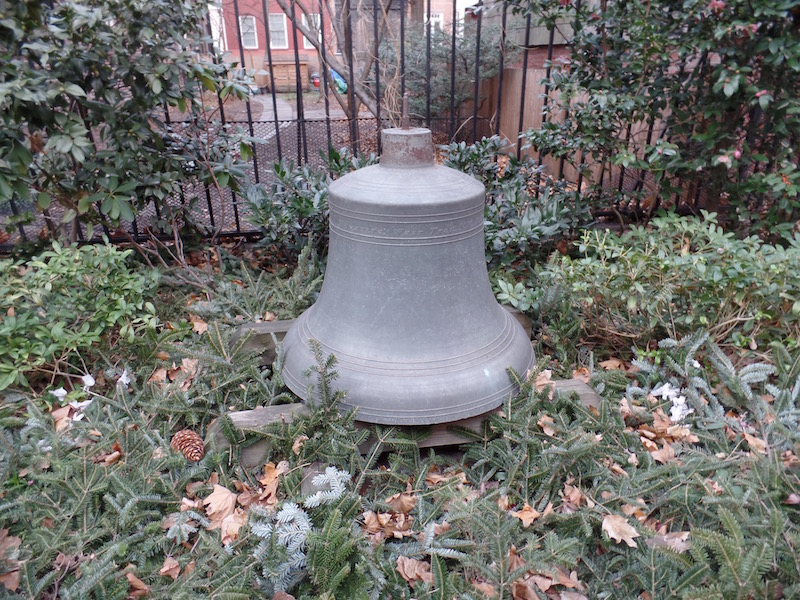
Plymouth Church was founded in 1847 with the building dating back to 1850. The barn-like church building, with its pews arranged in an arc before the pulpit, resemble more an auditorium or theater than what had traditionally been considered a church. This open design was adopted by many evangelical Protestant churches throughout the United States in the second half of the 19th century. The stained glass windows, which date to 1909, are unique in that they do not depict any biblical scenes. Instead they focus on the history of democracy in England and the USA, with a particular emphasis on the influence of the Puritans, Pilgrims and Congregational Churches. In the church garden is a statue of the first pastor, Henry Ward Beecher, who became a leading figure in the abolitionist movement.
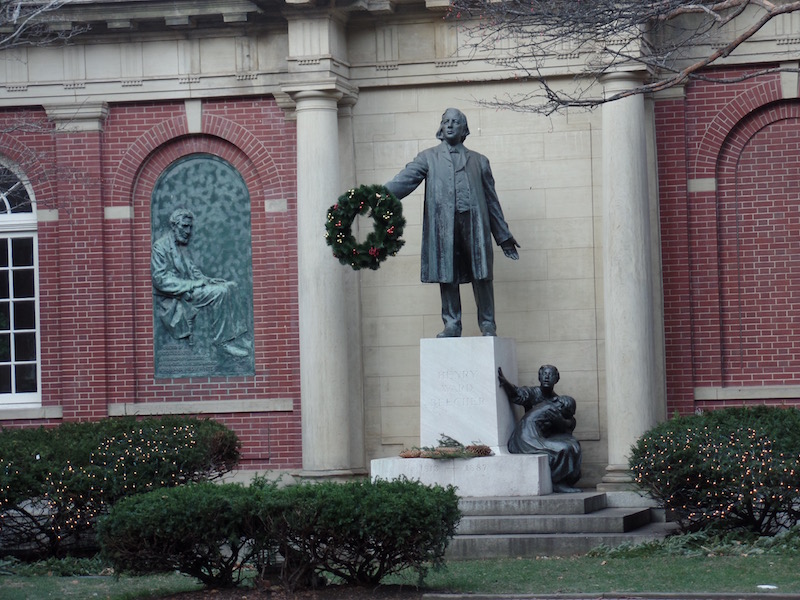
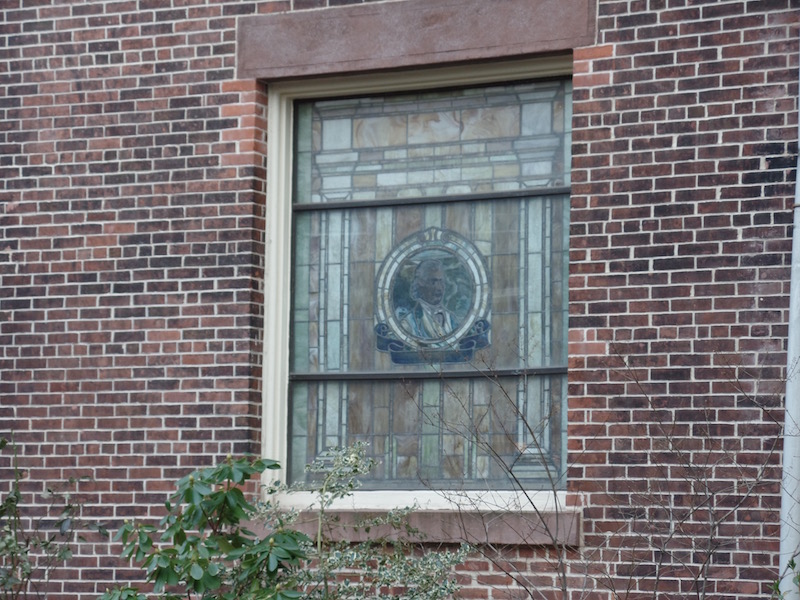
This is a view of lower Manhattan from the Brooklyn shoreline, as well as some wharfs on that side. Also a few pictures of the bridge from the Brooklyn side and the Statue of Liberty.
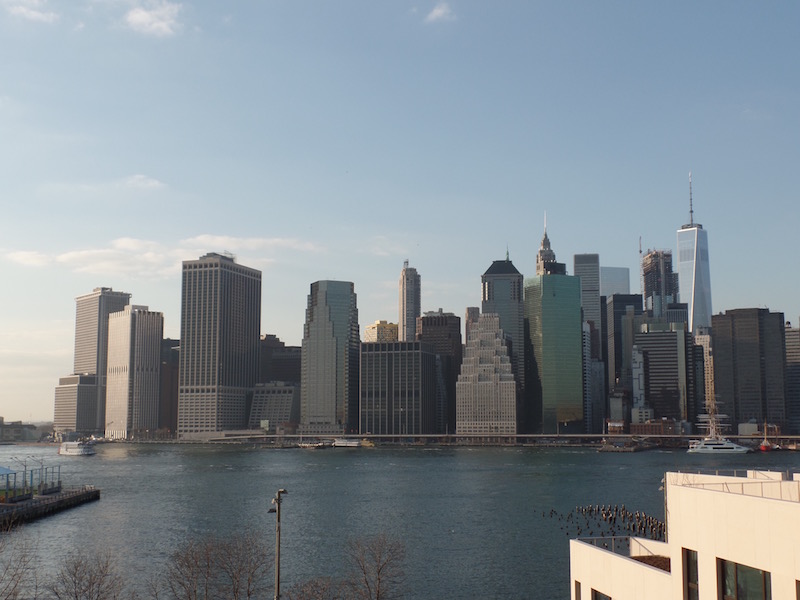
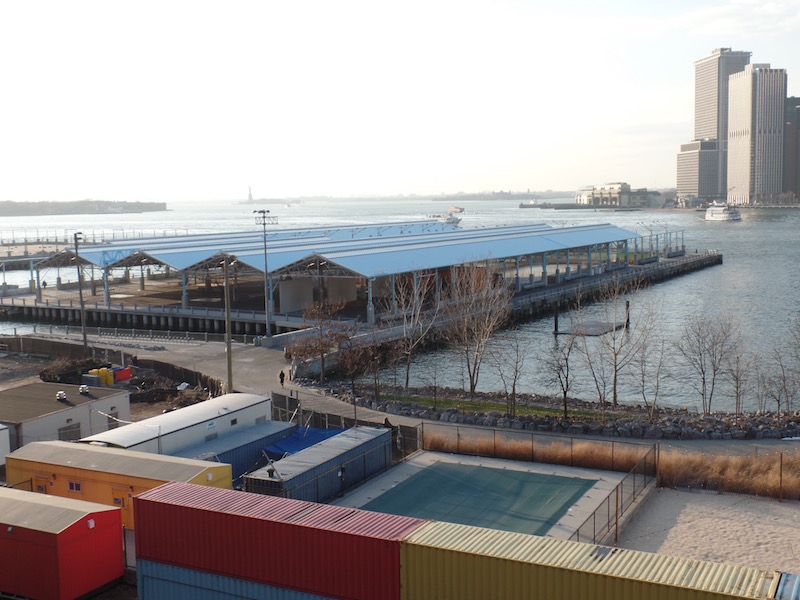
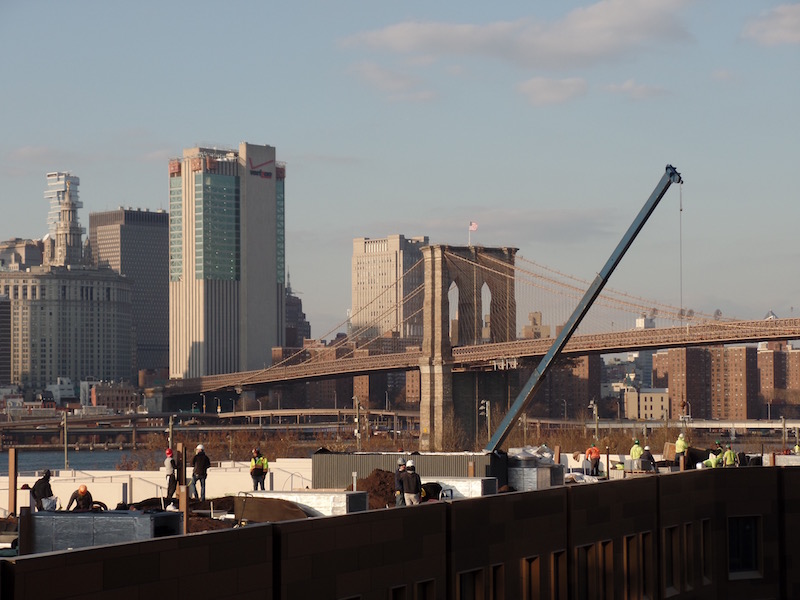
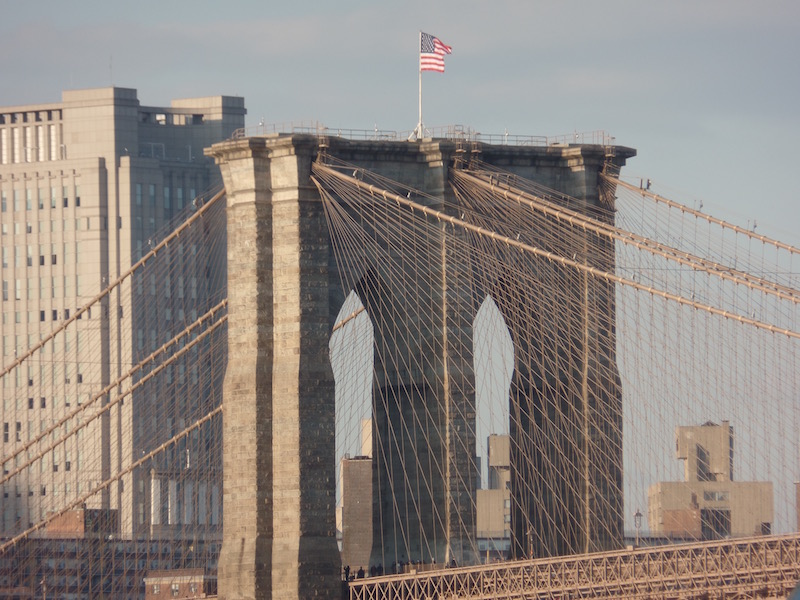
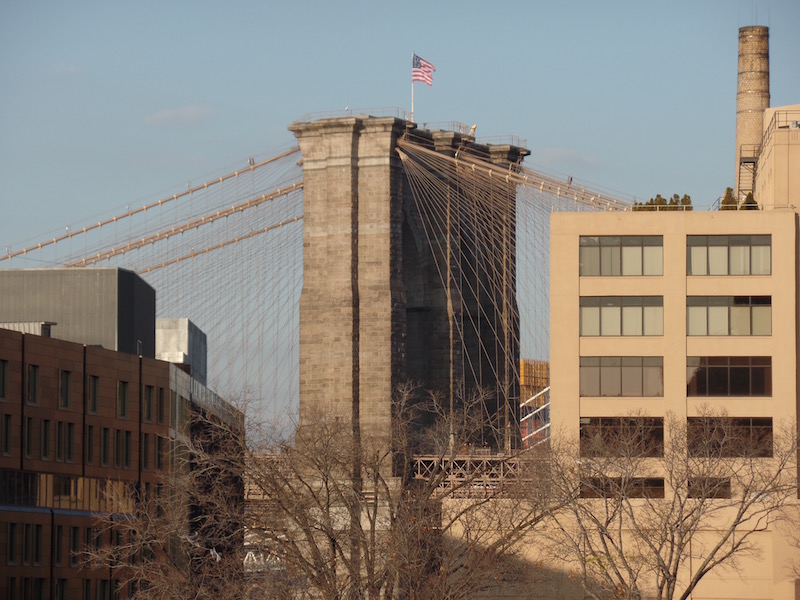
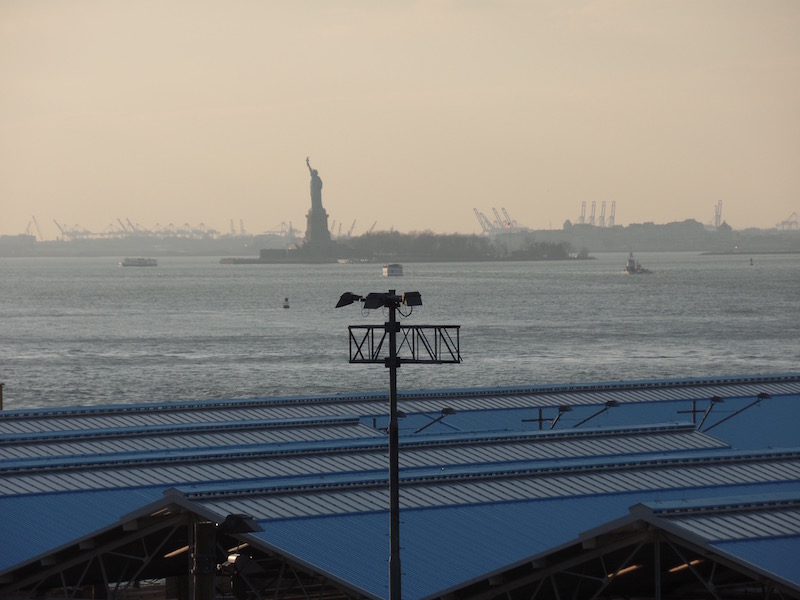
Built in 1926 as the Leverich Towers Hotel, the sixteen-story building was designed by architecture firm Starrett and Van Vleck. The building is a Romanesque Revival style structure with Venetian influenced towers punctuating the building's corners. The four colonnaded towers were once lit at night. The architectural embellishments include a visually solid base of ashlar-patterned stone, arched windows, corbeled brick patterns and terracotta ornamentation. It fell into disrepair and have been converted into condos.
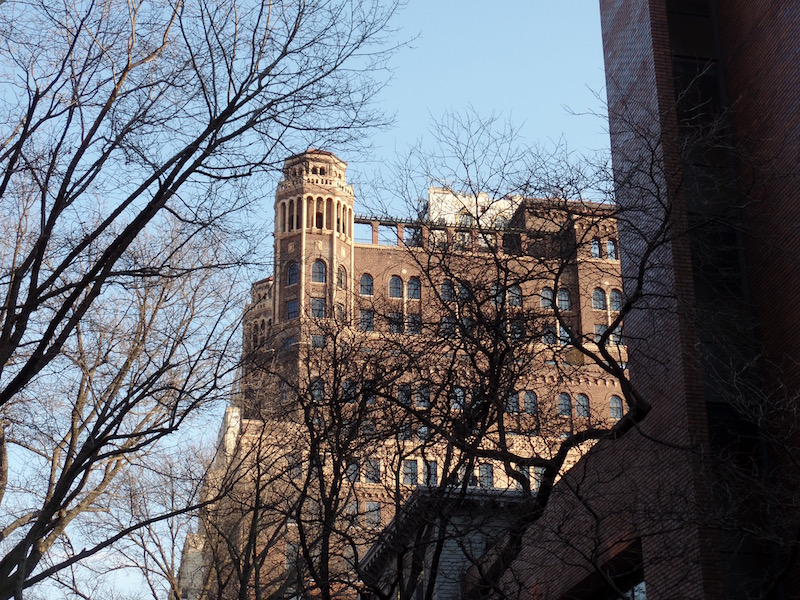
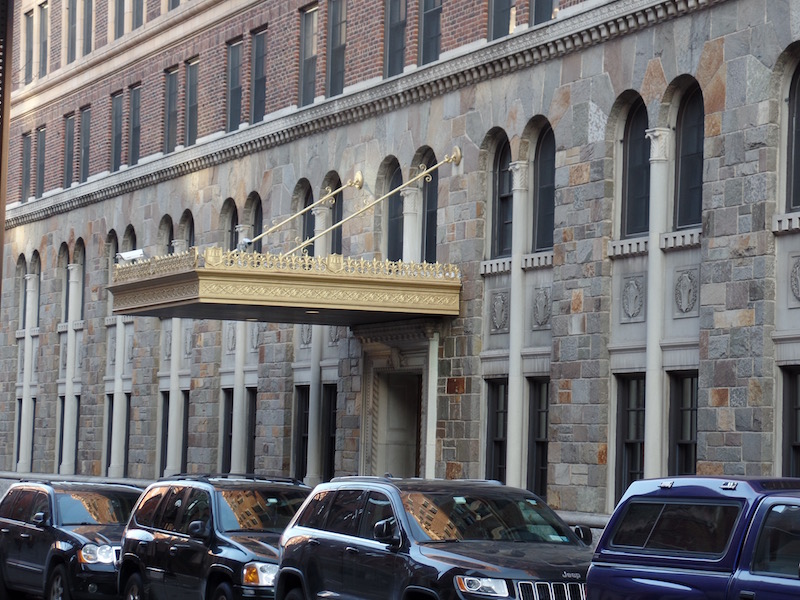
This is the Christmas Market and ice rink at Bryant Park, another tradition during the holidays is to go to the Christmas Markets in NYC.
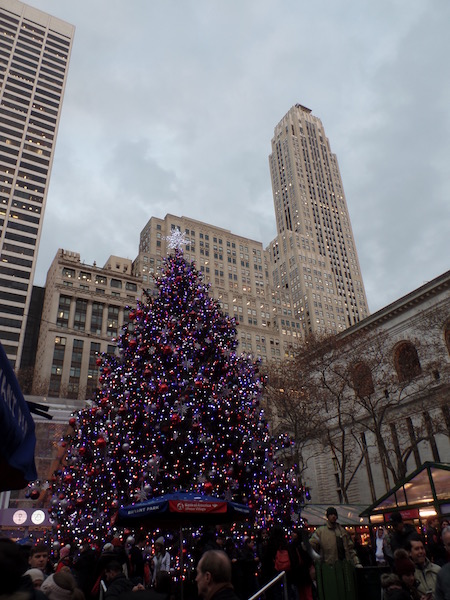
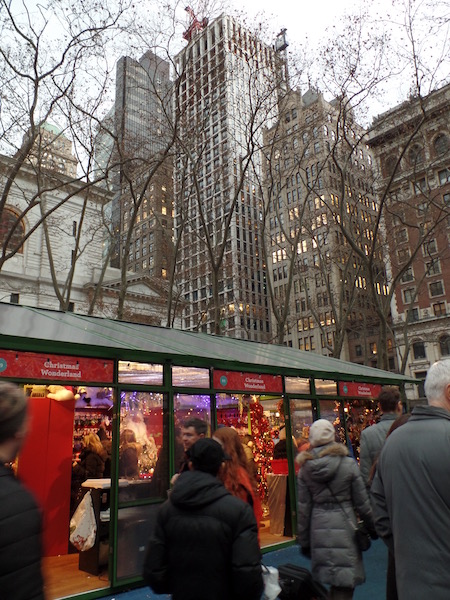
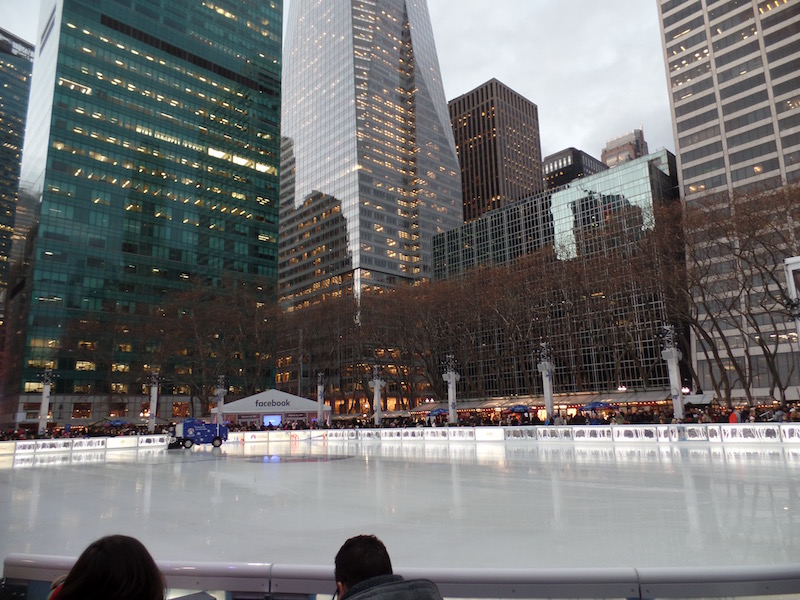
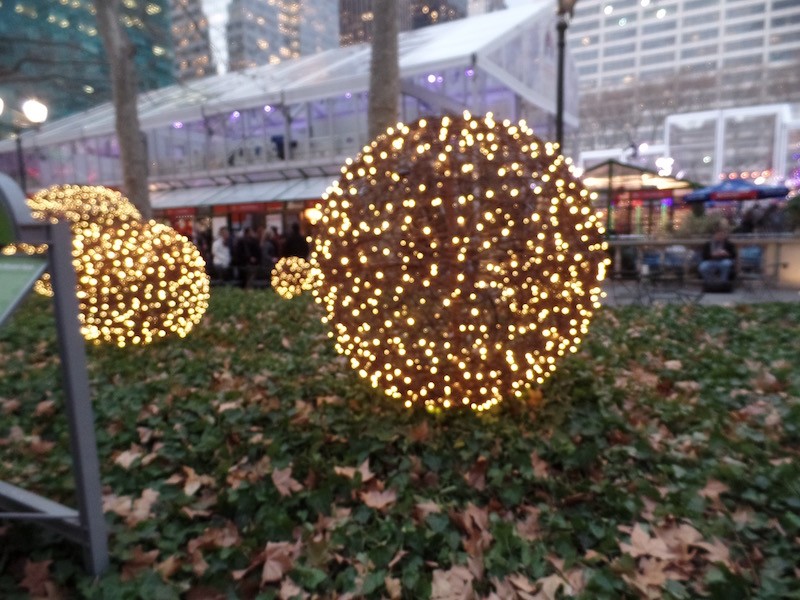
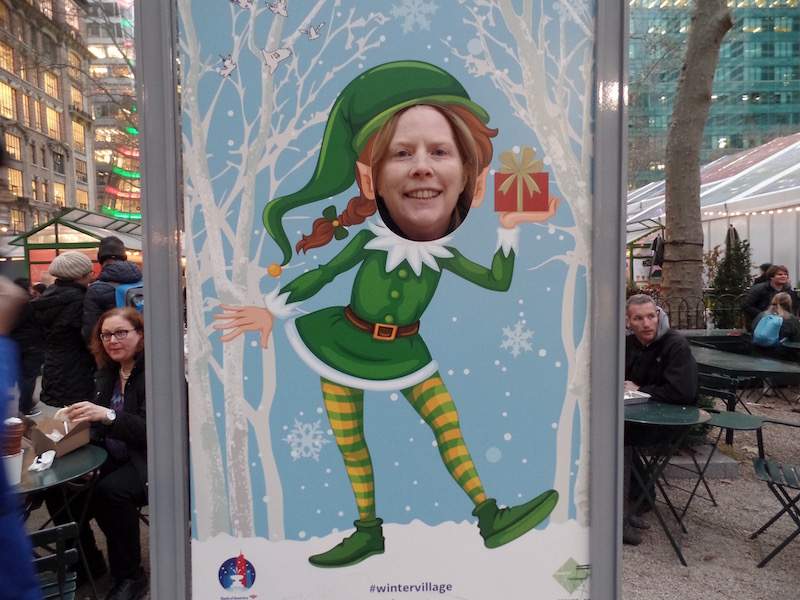
From Bryant Park, we headed to the Christmas Market at Union Square. By that time, it was getting dark and the lights were all on.
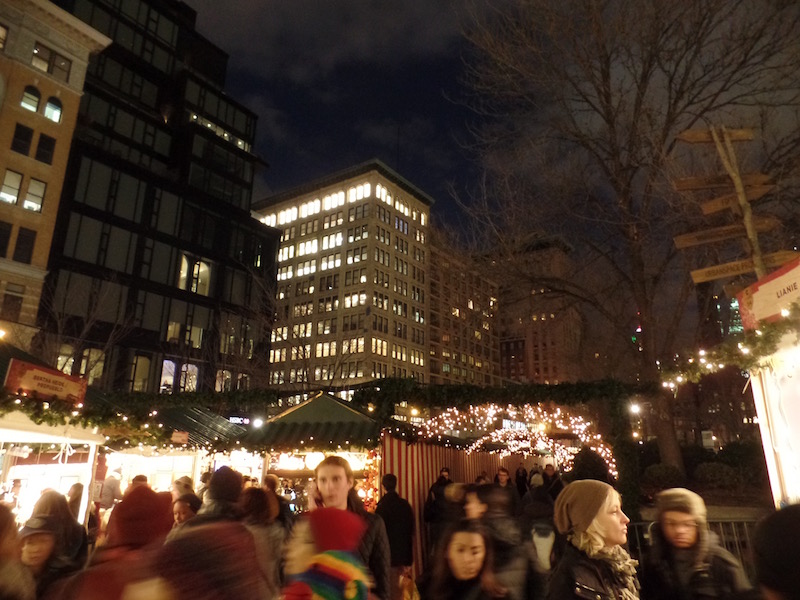
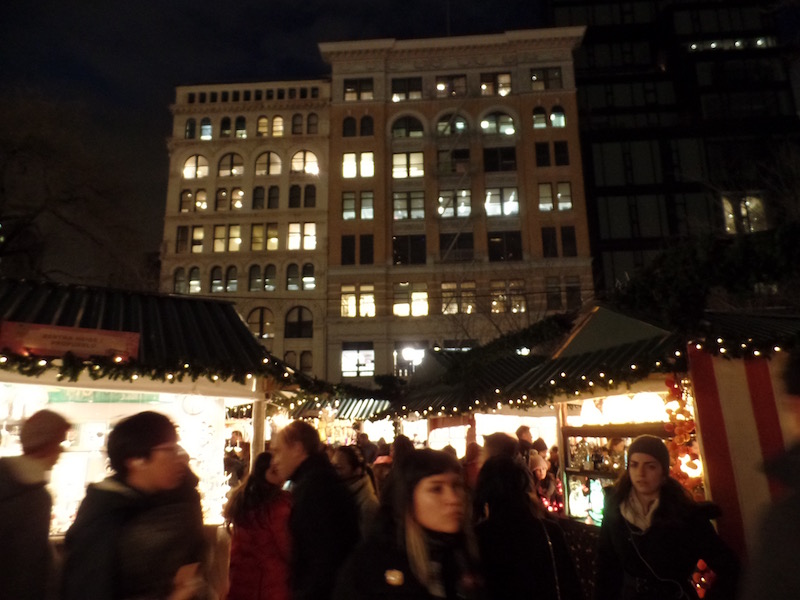
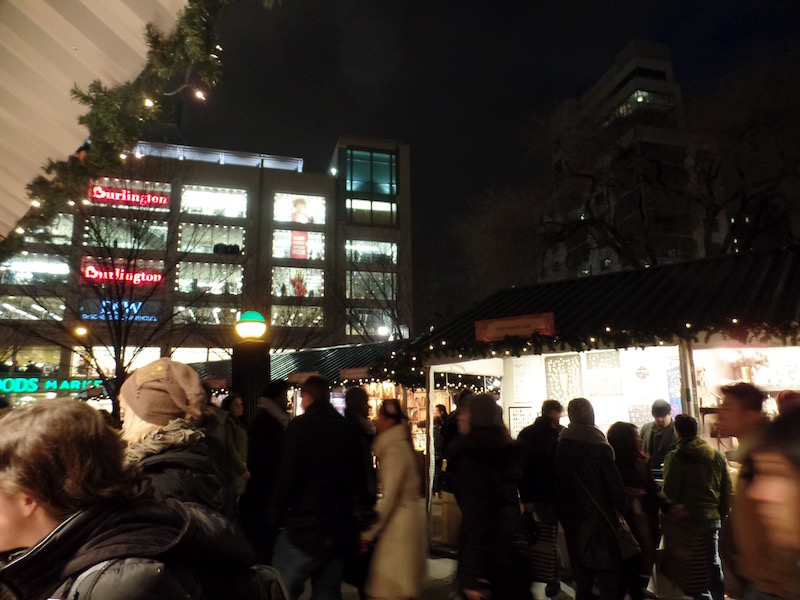
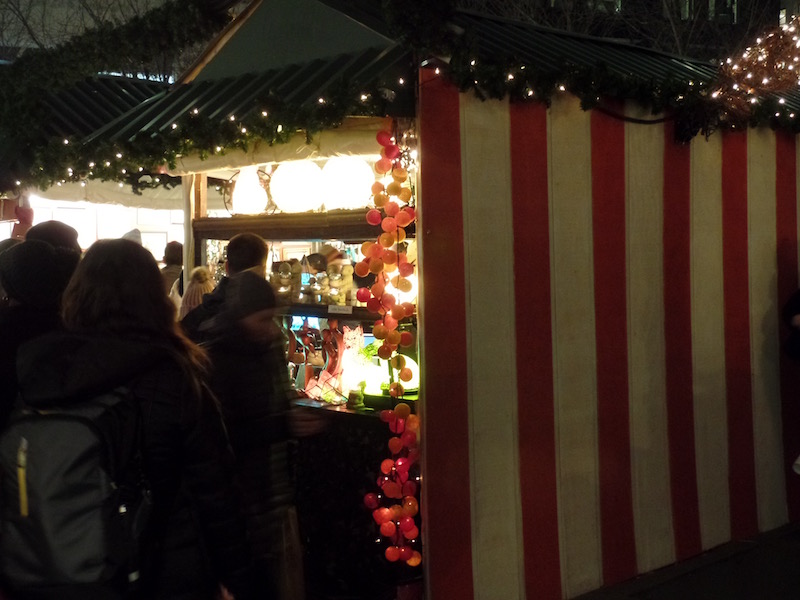
A bit blurry, but the Empire State Building with holiday colors.
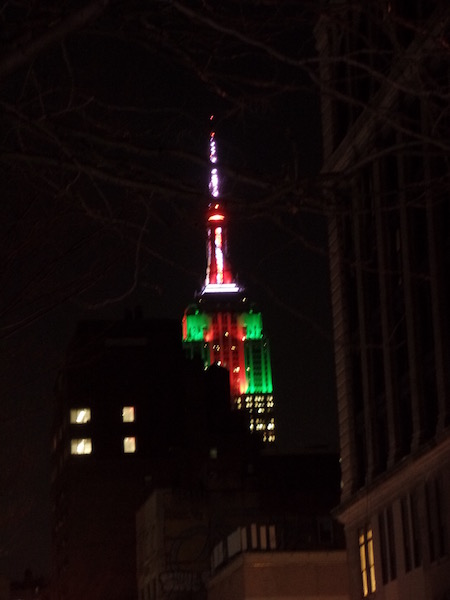
Tonight's dinner was at The Beatrice Inn. The history of The Beatrice Inn spans nearly a century. It operated as a speakeasy in the 1920s, and the backdoor that employees and customers used to escape from police is still in use. In the 1950s, it was a neighborhood Italian restaurant and then a wildly popular nightclub for celebrities, fashion designers, and New York socialites. The new owner has attempted to move it from a place to be seen, to a place to enjoy a great meal.
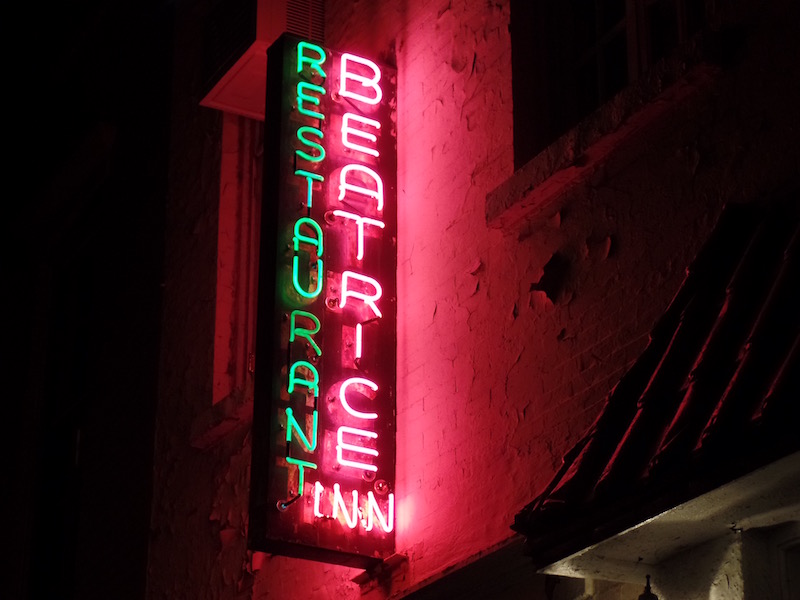
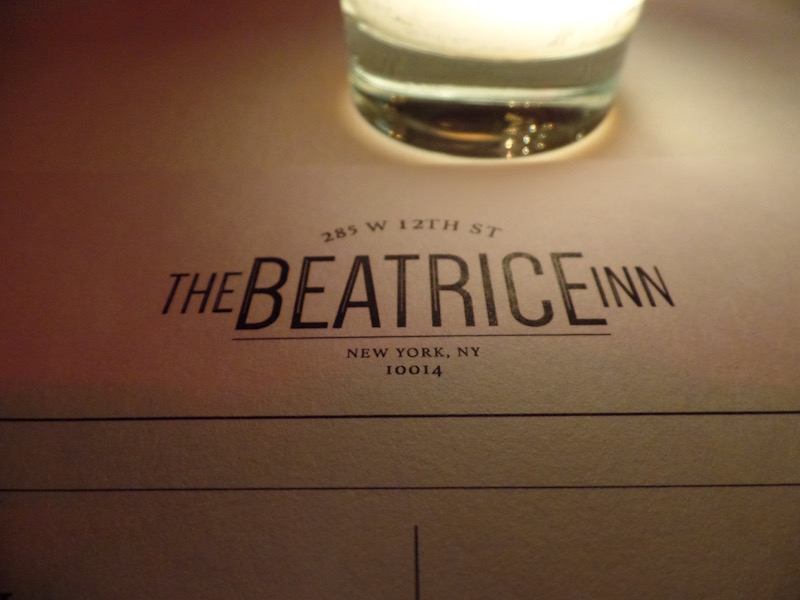
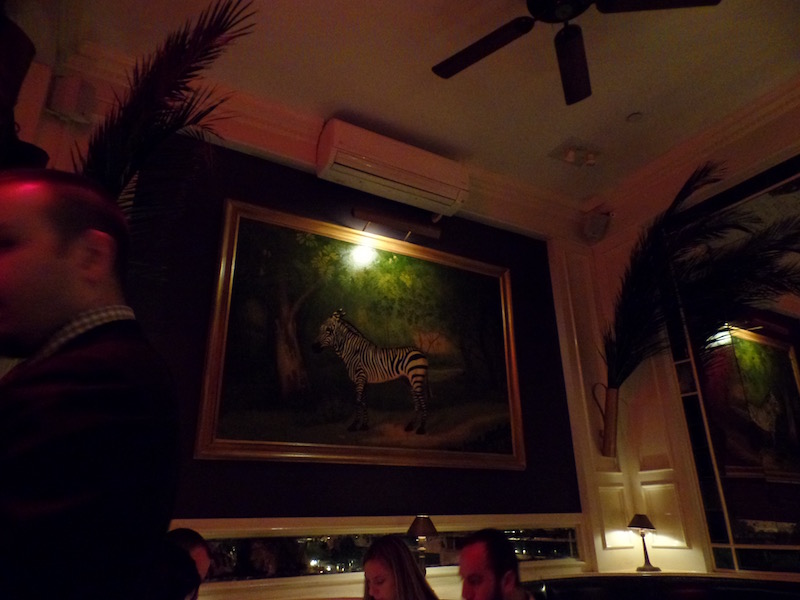

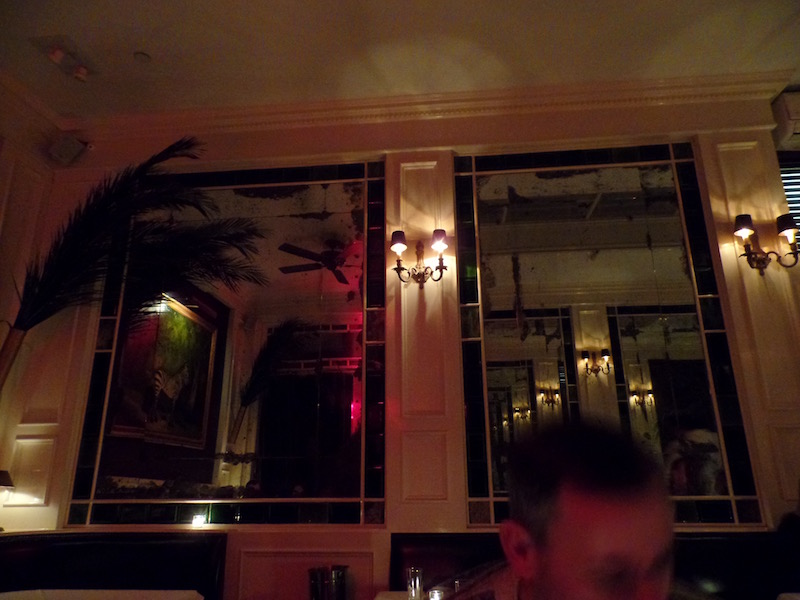
It must be truffle season, because several of the restaurants had truffle options. Here, they brought the black and white truffles out to show us.
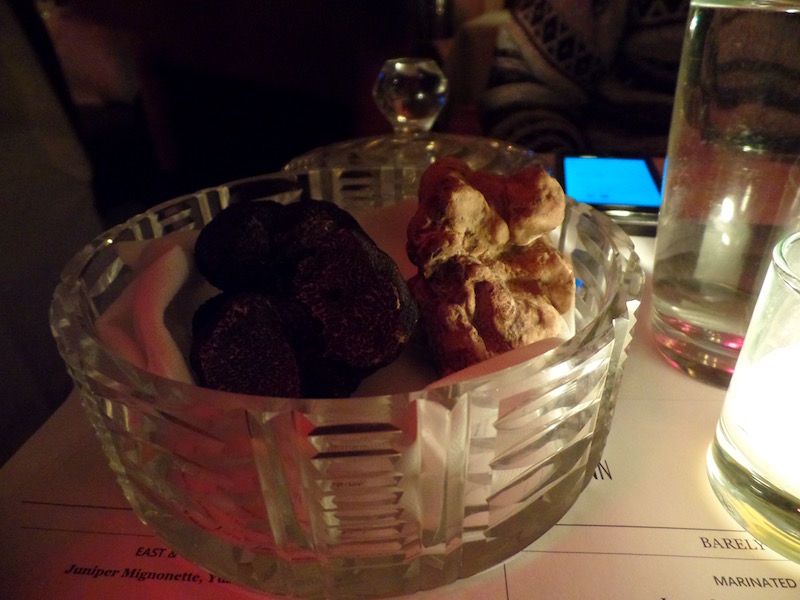
We started off with a small dish of marinated olives, with lavender, rosemary, lemon, and Pernod. I find it a little interesting since Tom used to not eat olives .. all that changed during our time in Paris.
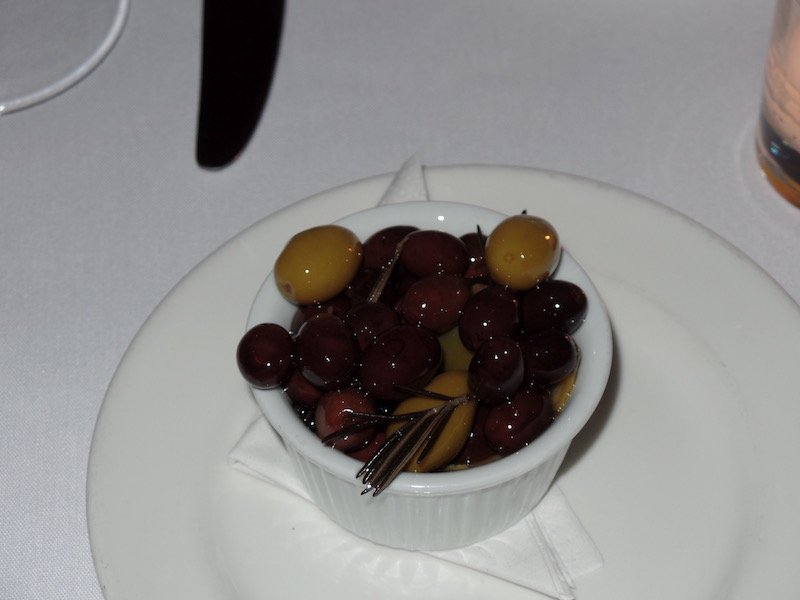
I decided to try something a bit different for me, braised Oxtail with mashed potatoes, Madeira, Prunes and Thyme. In the 2nd picture, you can clearly see the bone of the tail going through the middle. It was very tender, although a little bit too much fat for me.
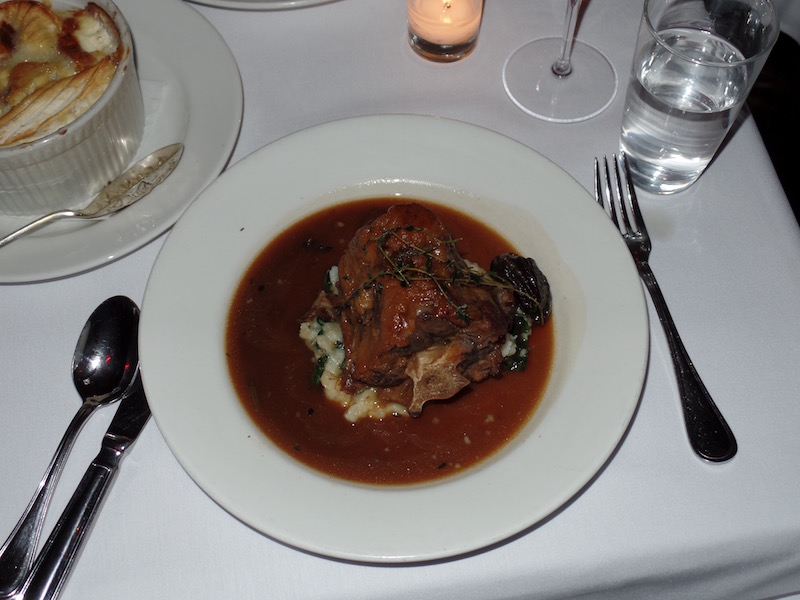
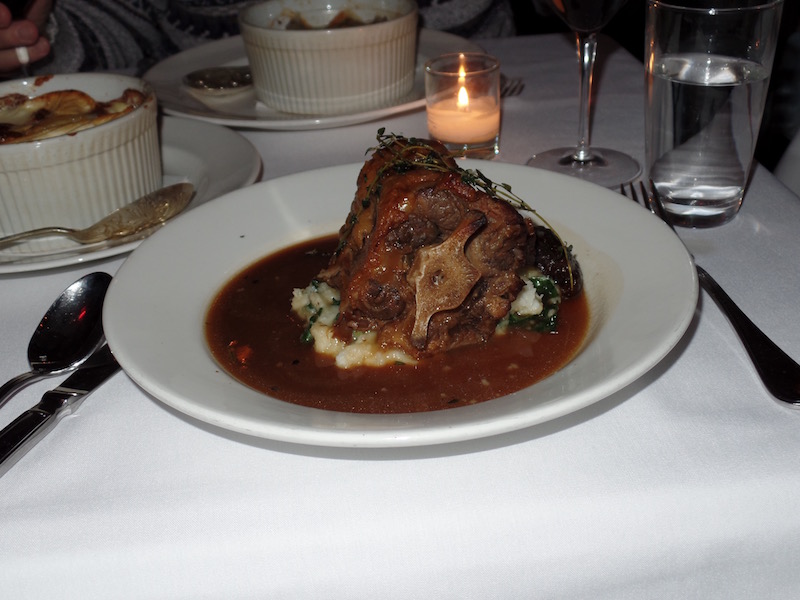
This is the tartefette with sauteed onions, sage, and d'affinois. A tarteflette is a French dish from the Savoy region in the French Alps and is normally made with potatoes, reblochon cheese, diced bacon, and onions. In this case, they used a cheese called d'affinois instead of the reblochon.
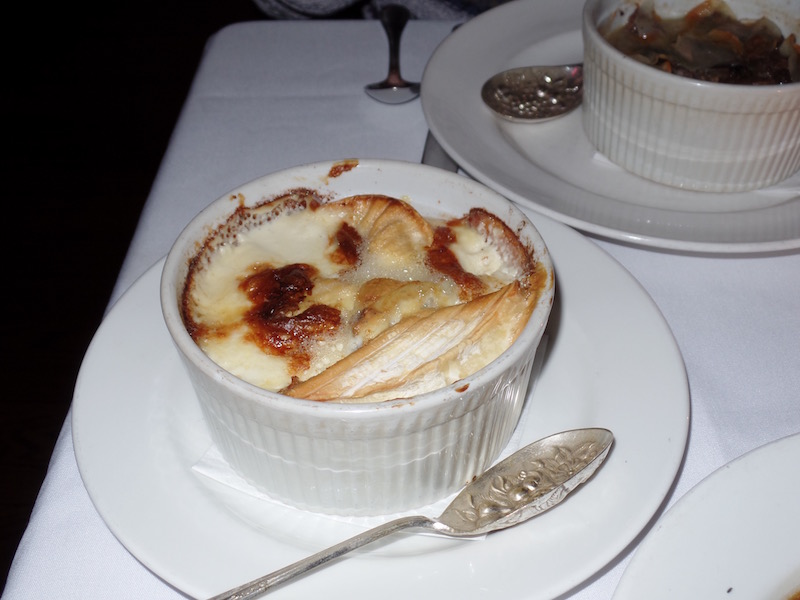
Tom went with the beef check and white wine braised veal with mushrooms.
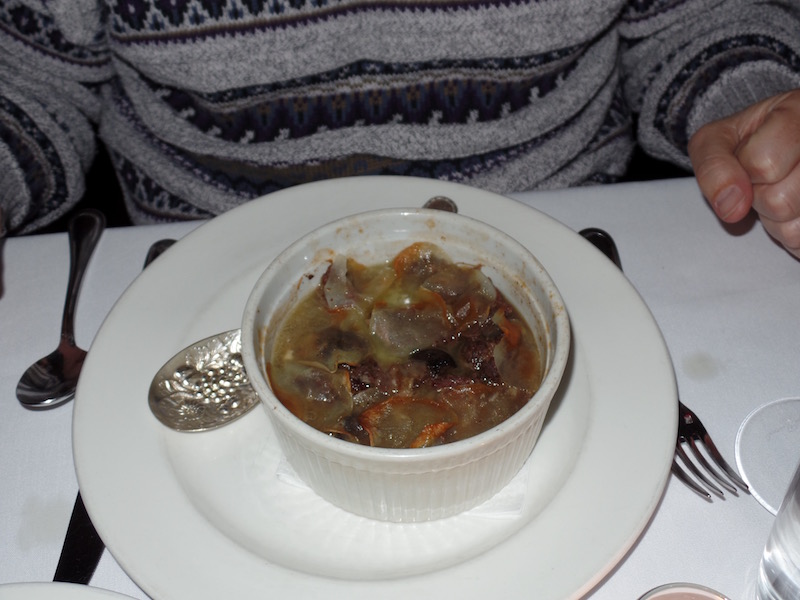
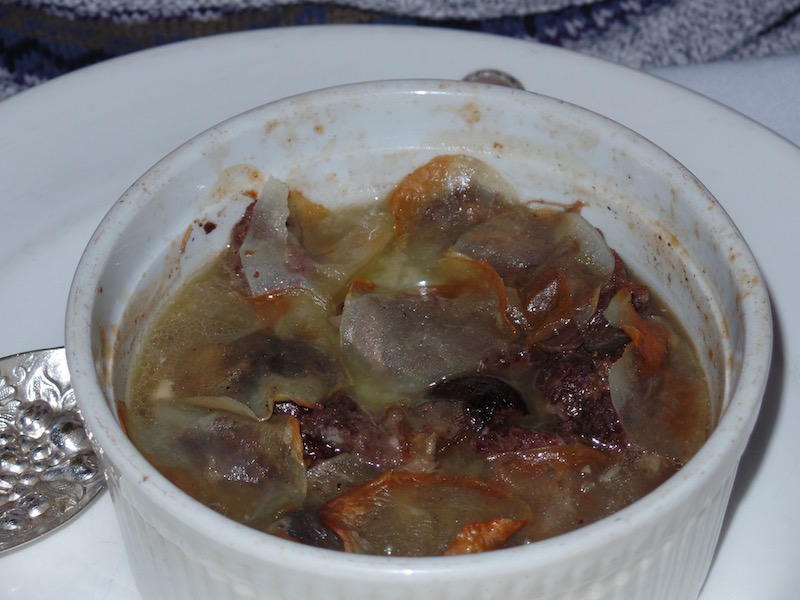
We finished the night with little cups of espresso.
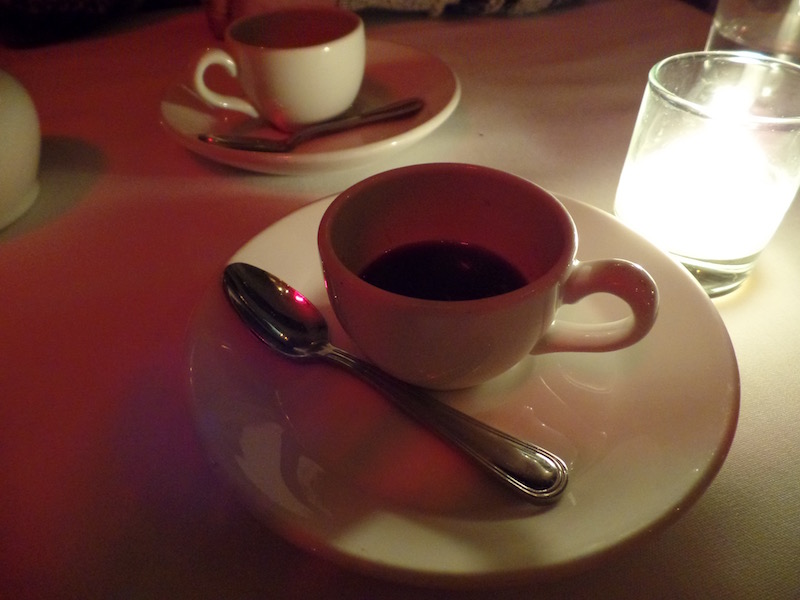
So, we found it interesting that the restaurant actually said it was "not" handicap accessible! It is literally the basement of a building, you walk down these stairs to get in.
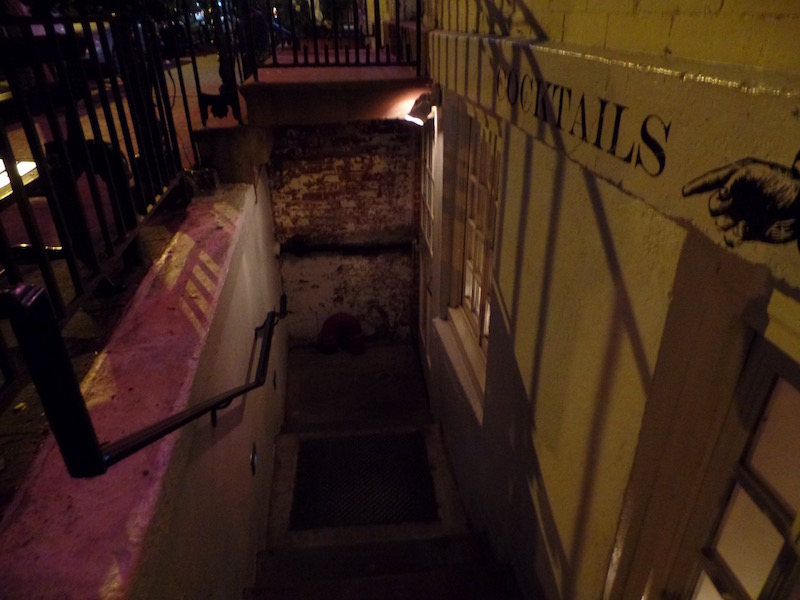
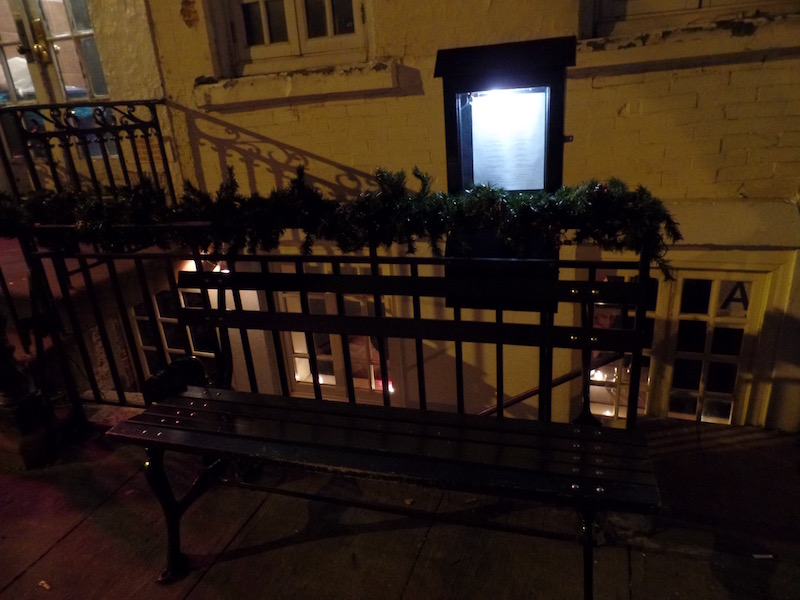
Tom getting into the Christmas mood with a lit tree as we walked back to the subway.
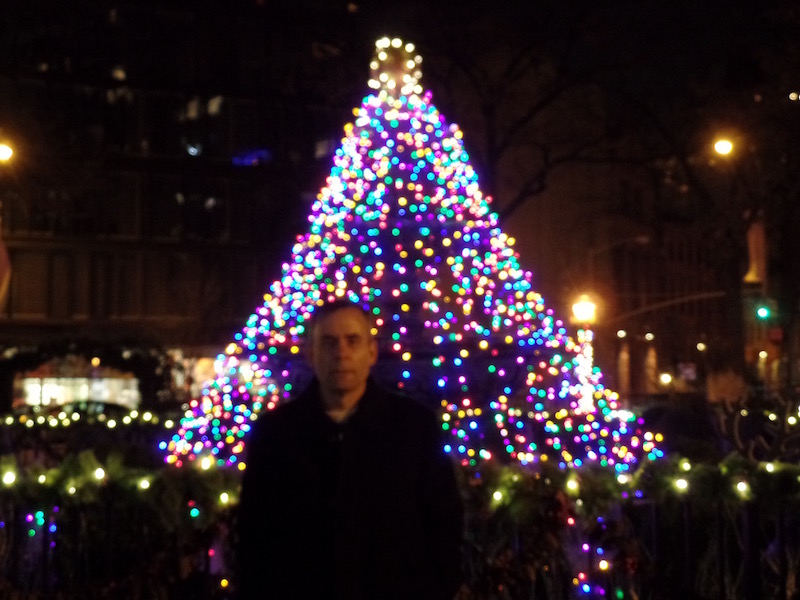
We stopped by Empire Cake for a cupcake and a few little dessert bites.
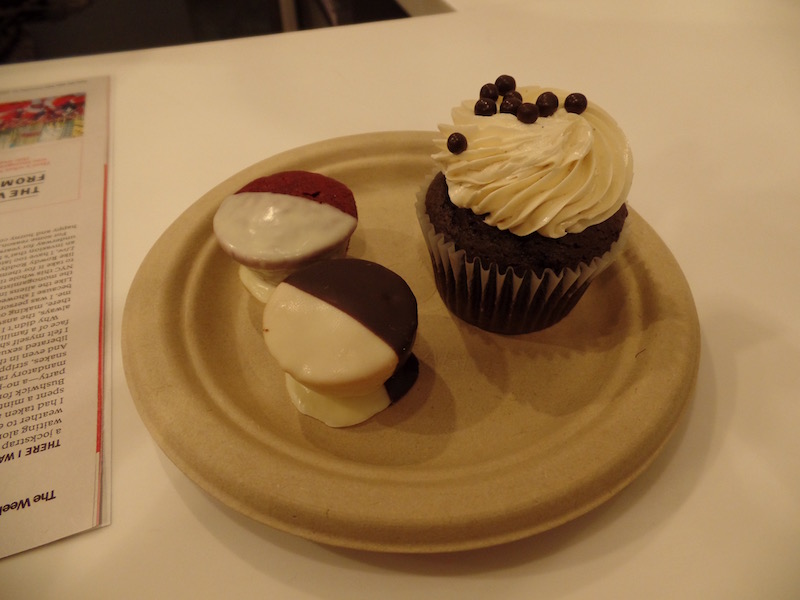
Proceed to NYC Day 6